Up in the Reno, NV area, the local PBS station runs a show called Wild Nevada and on a recent episode, they went on an adventure to explore some prehistoric Indian rock shelters and then climbed to the top of Mclane Peak. Being that this all took place in one of our favorite areas up in Northern Nevada, Cindy and I decided that we needed to see and do all this for ourselves and the following are a few pics from our trip. We hope you enjoy.
Heading out into the desert on a beautiful autumn morning.
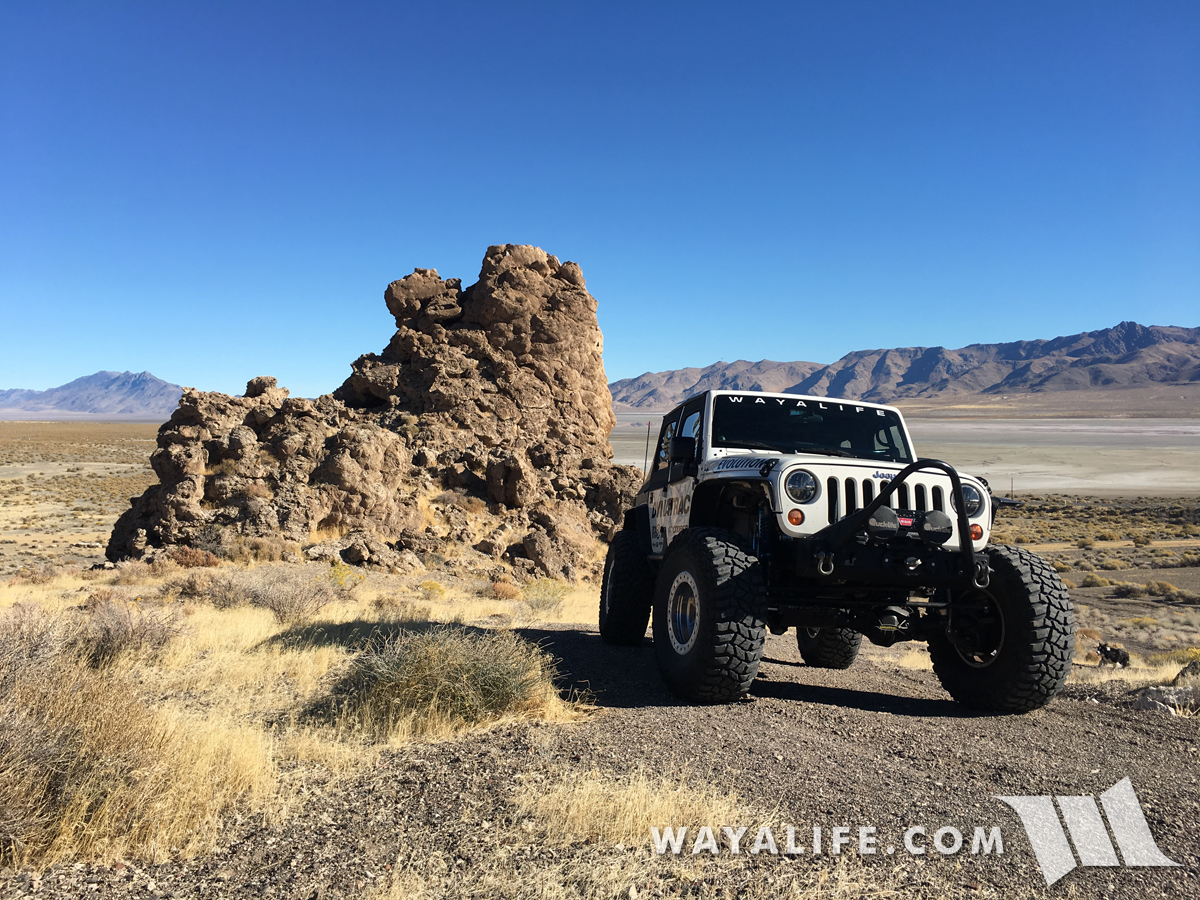
Look - There's some ass in the distant watching us!
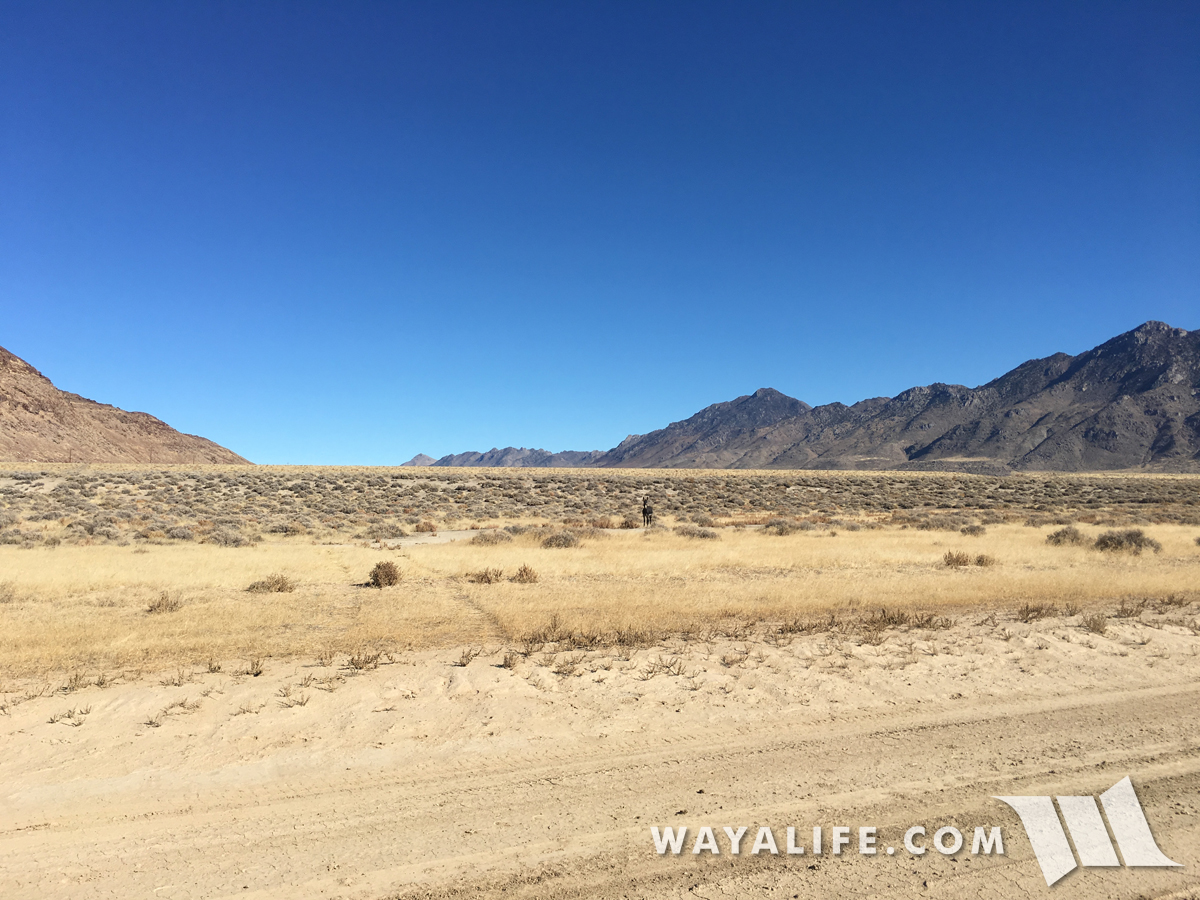
Heading up into the hills.
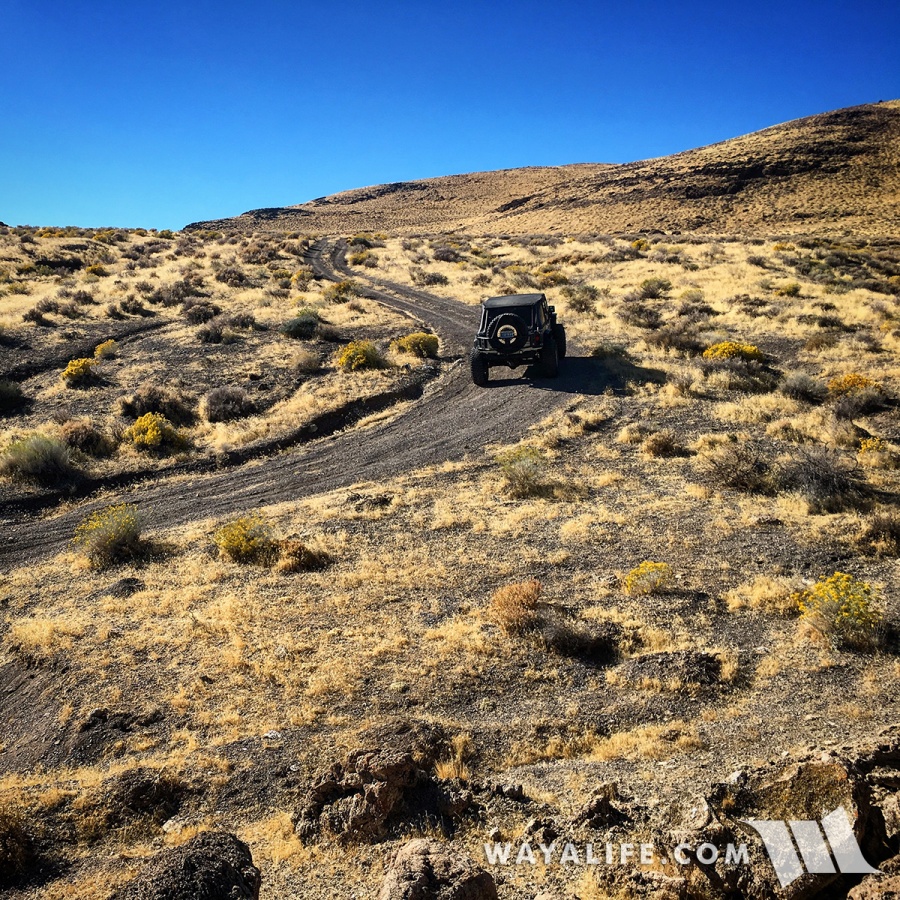
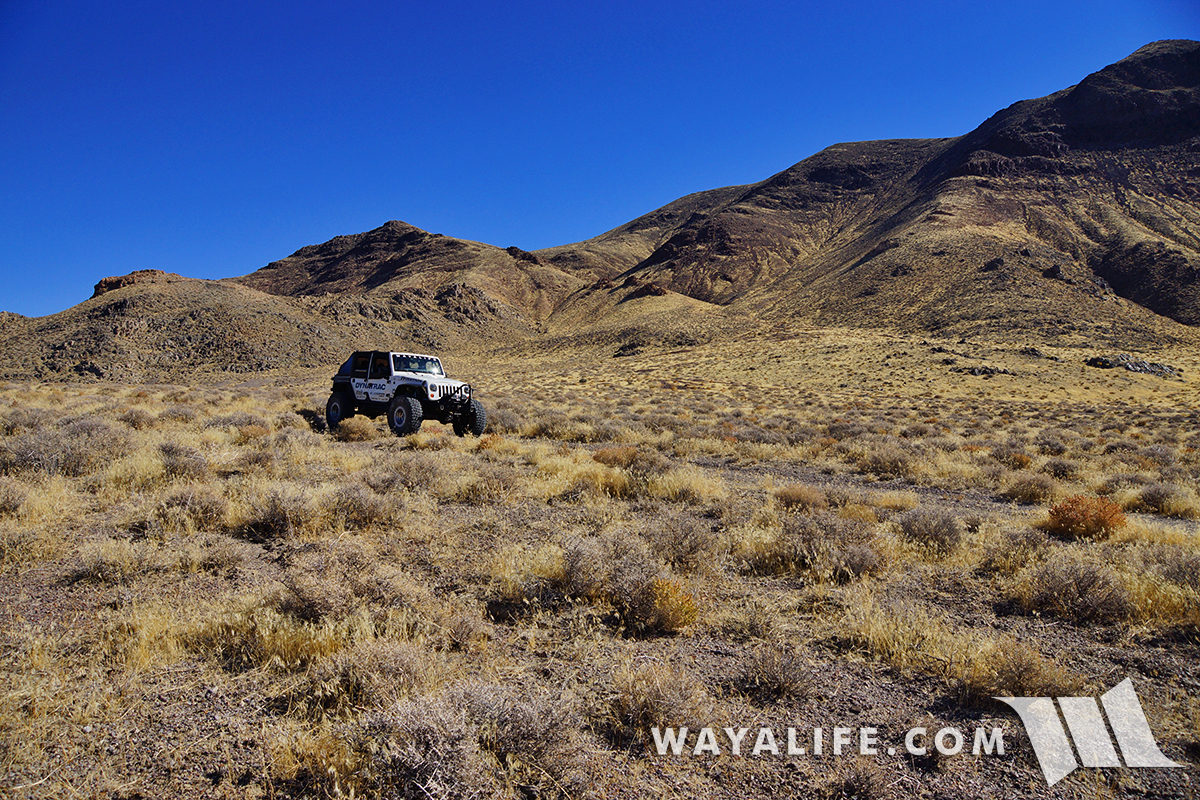
Making a stop to check out some cool looking tufa encrusted volcanic rocks.
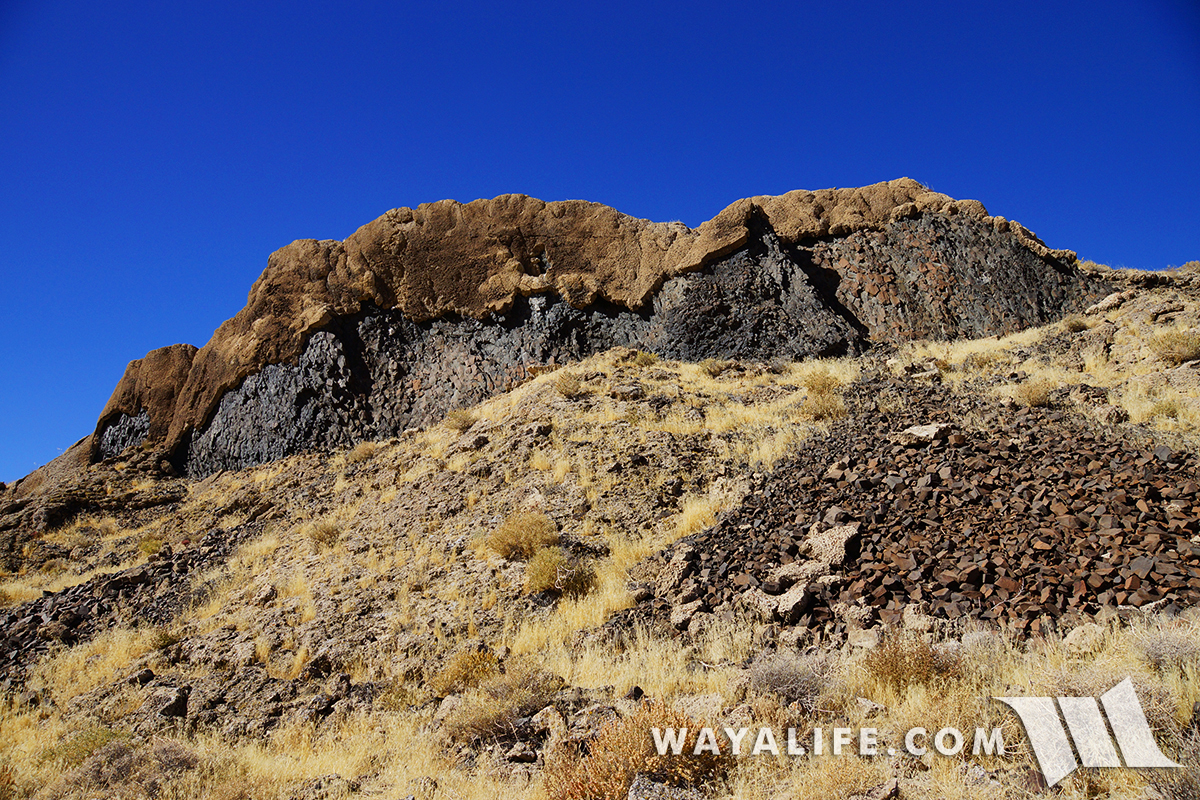
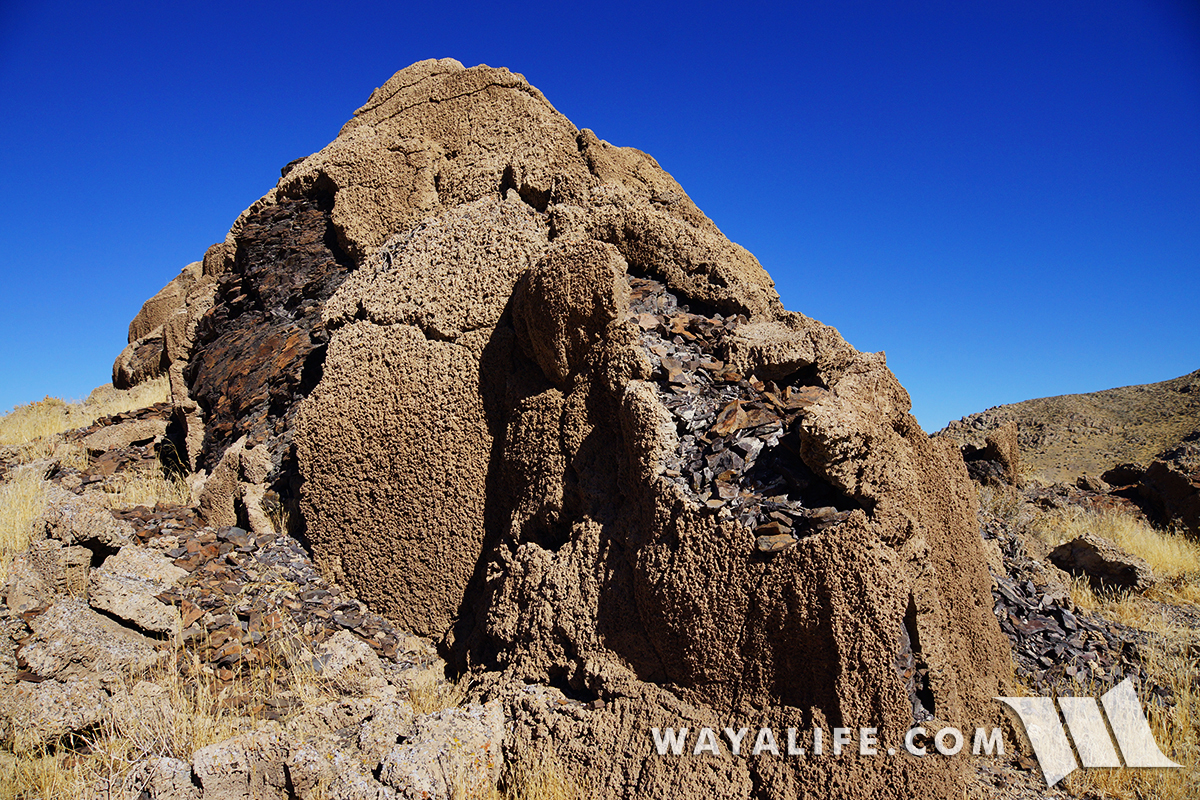
On the move again.
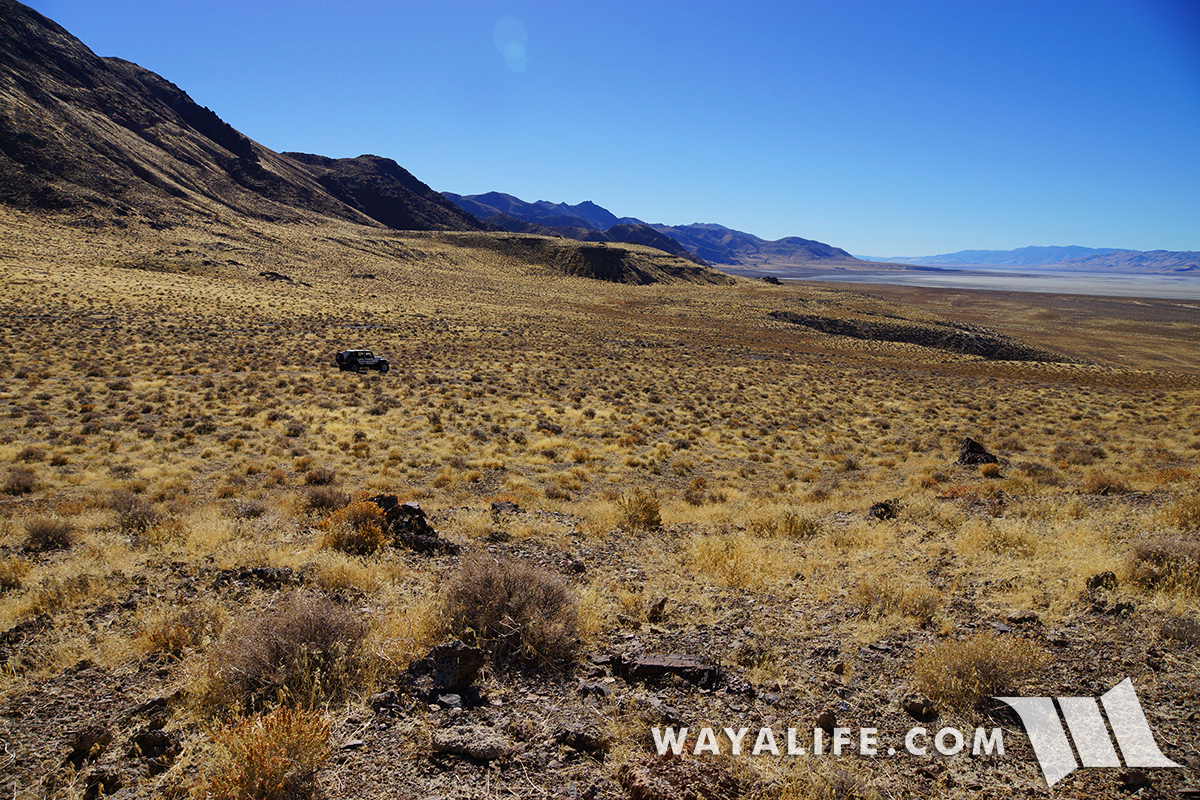
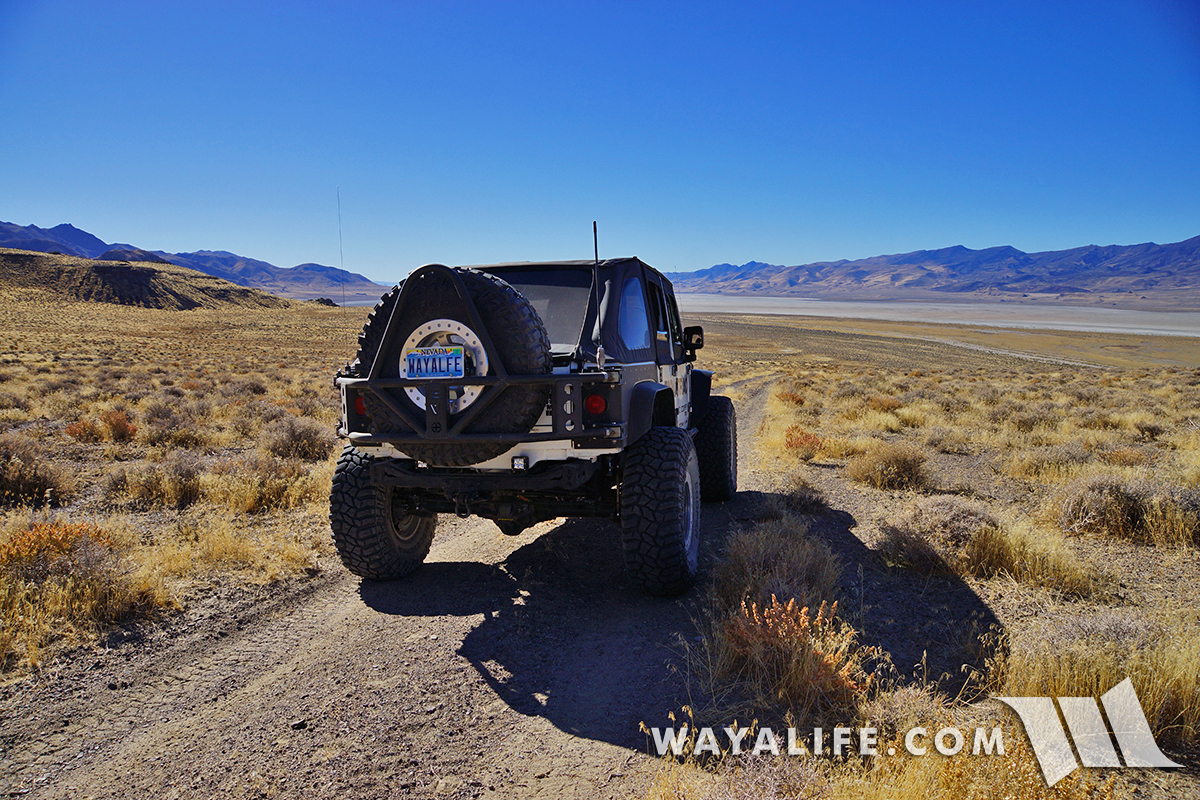
And here we are, our first official destination of the day - the Indian rock shelters.
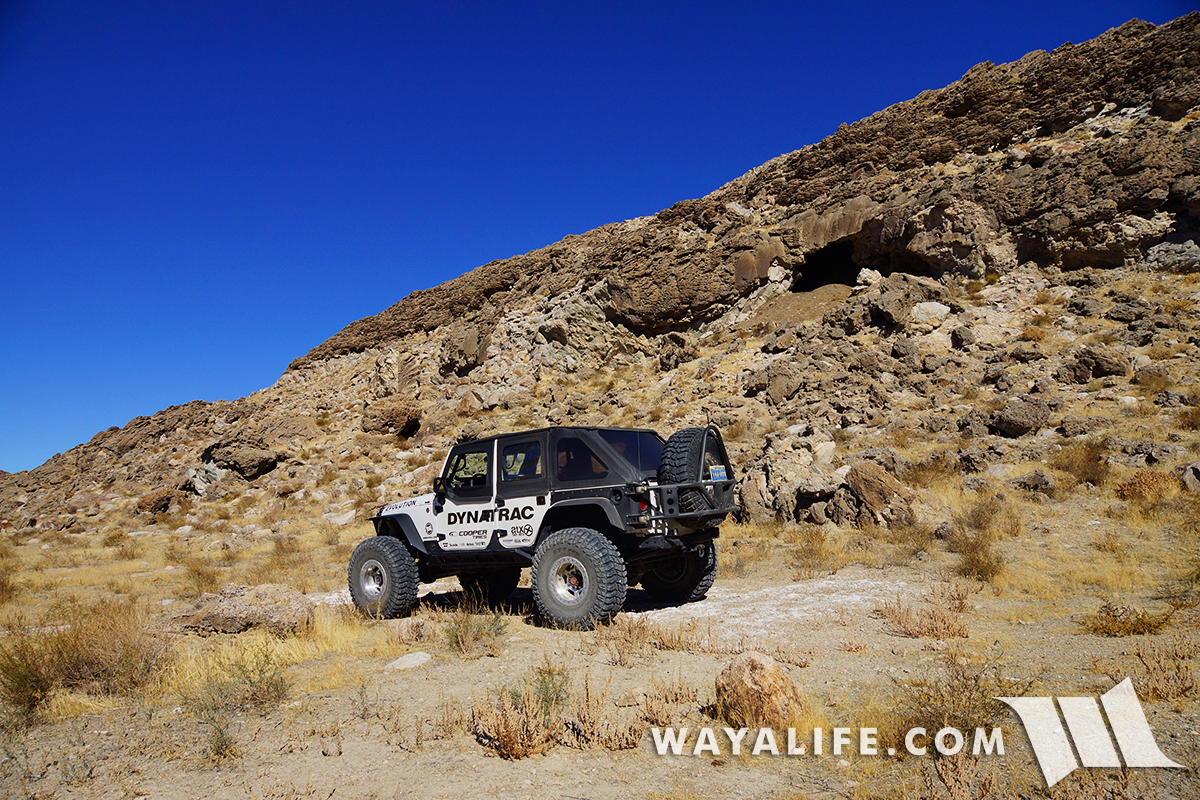
About 4,000 years ago, there was a large a shallow lake that filled the valley and it was known as Winnemucca Lake. Along its shores, natural caves like this were used as shelters by the Indians living in the area and for thousands of years.
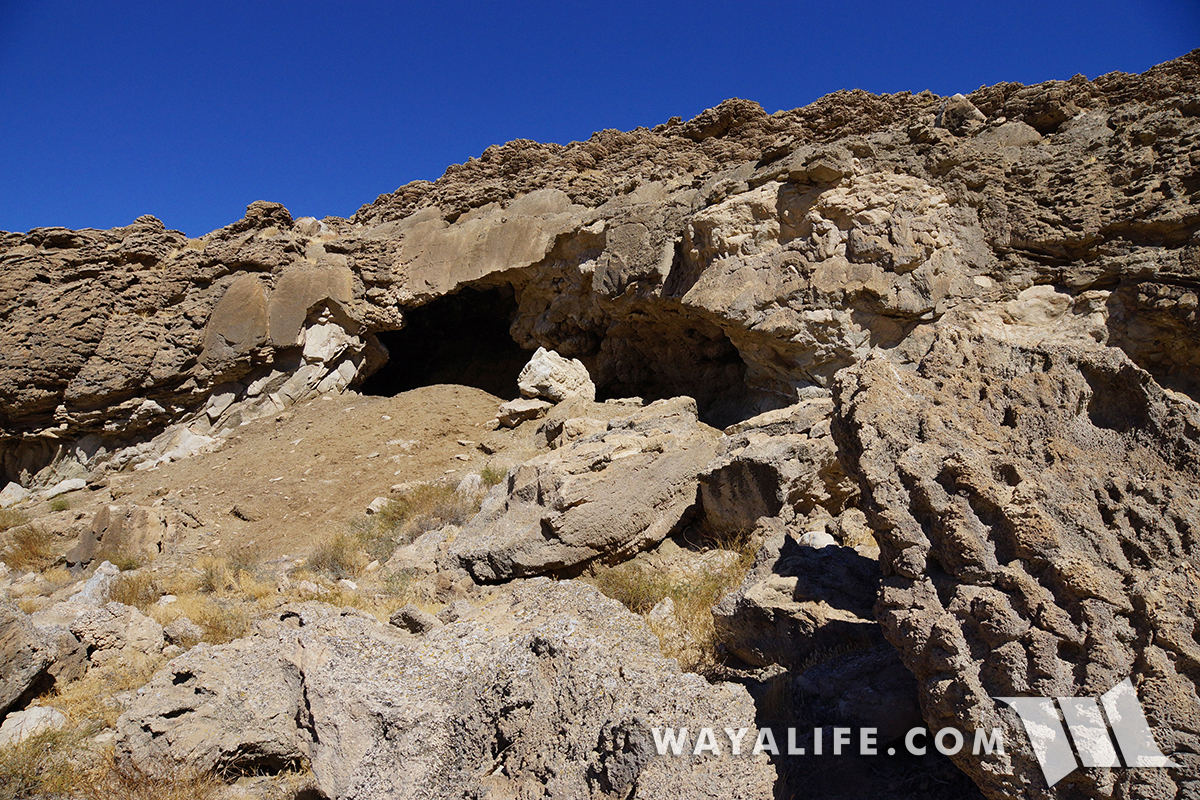
Almost 10,000 year earlier, an enormous body of water, hundreds of feet deep covered most of northwestern Nevada and it was known as Lake Lahontan. For thousands of years, algae growing on the rocks along captured calcium carbonate and over time, formed structures known as tufas. While there are a myriad of tufa types that you can find around the world, the ones you can find in this area are truly amazing as they tend to look organic and living like coral.
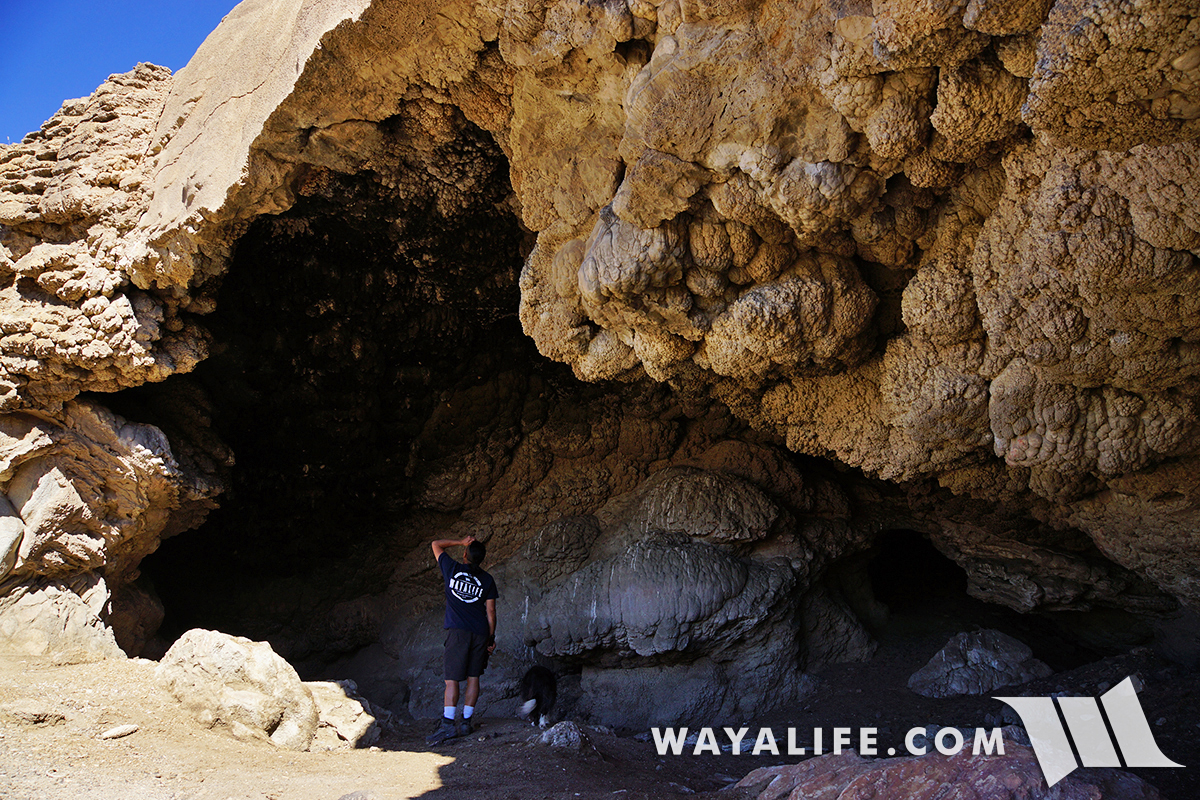
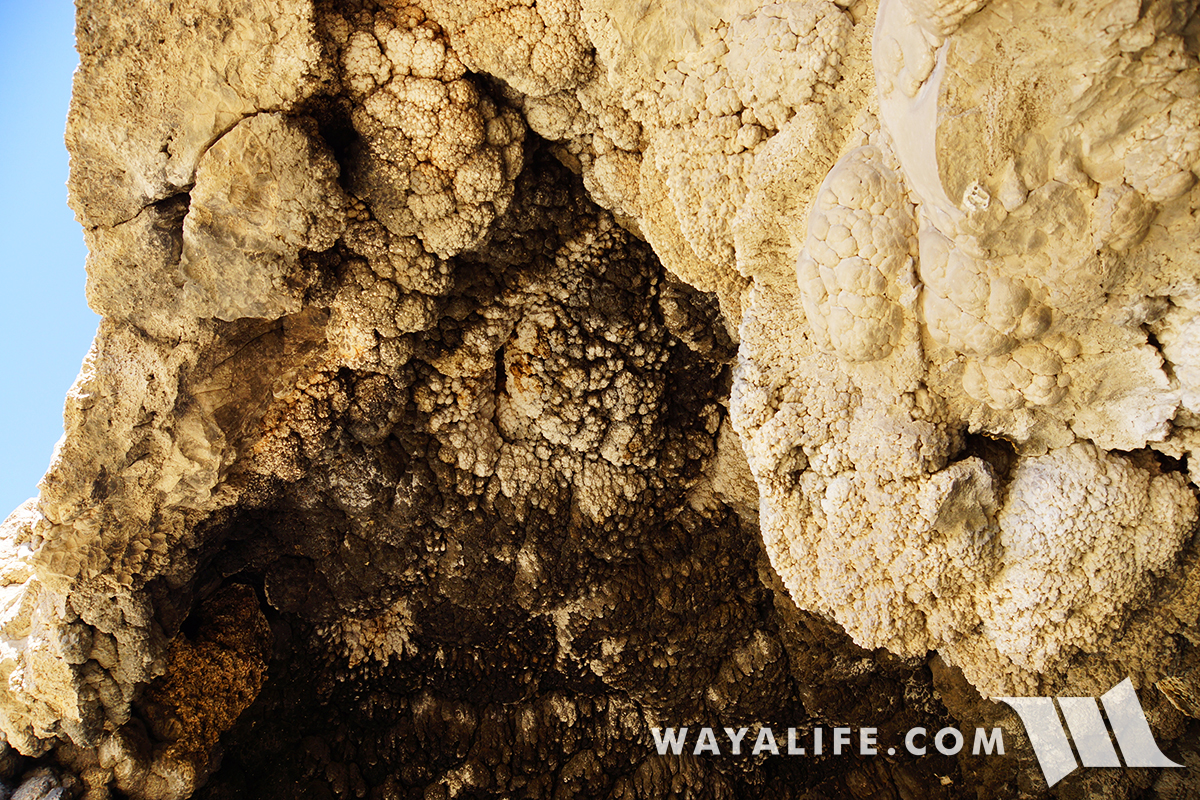
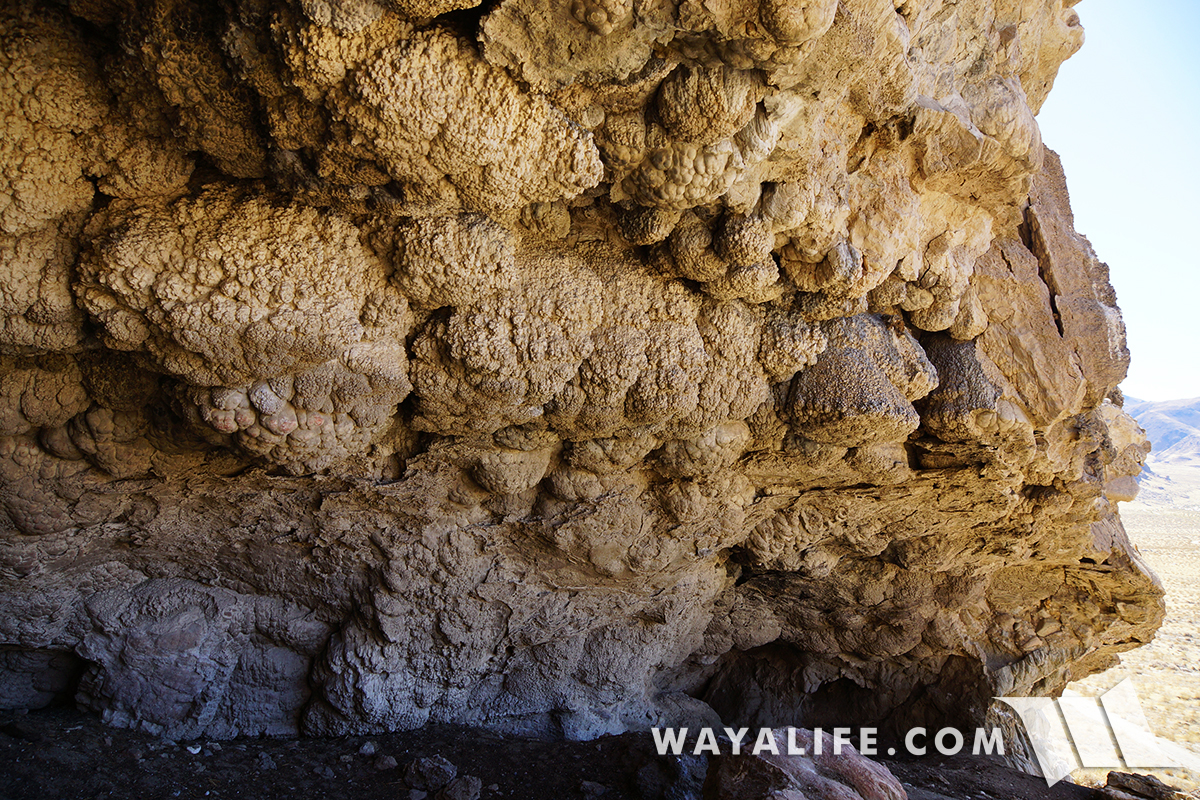
I have heard where tufas with this appearance are sometimes referred to as "chrysanthemum" as the deposits form clusters of "pillows" or "pendant" like shapes.
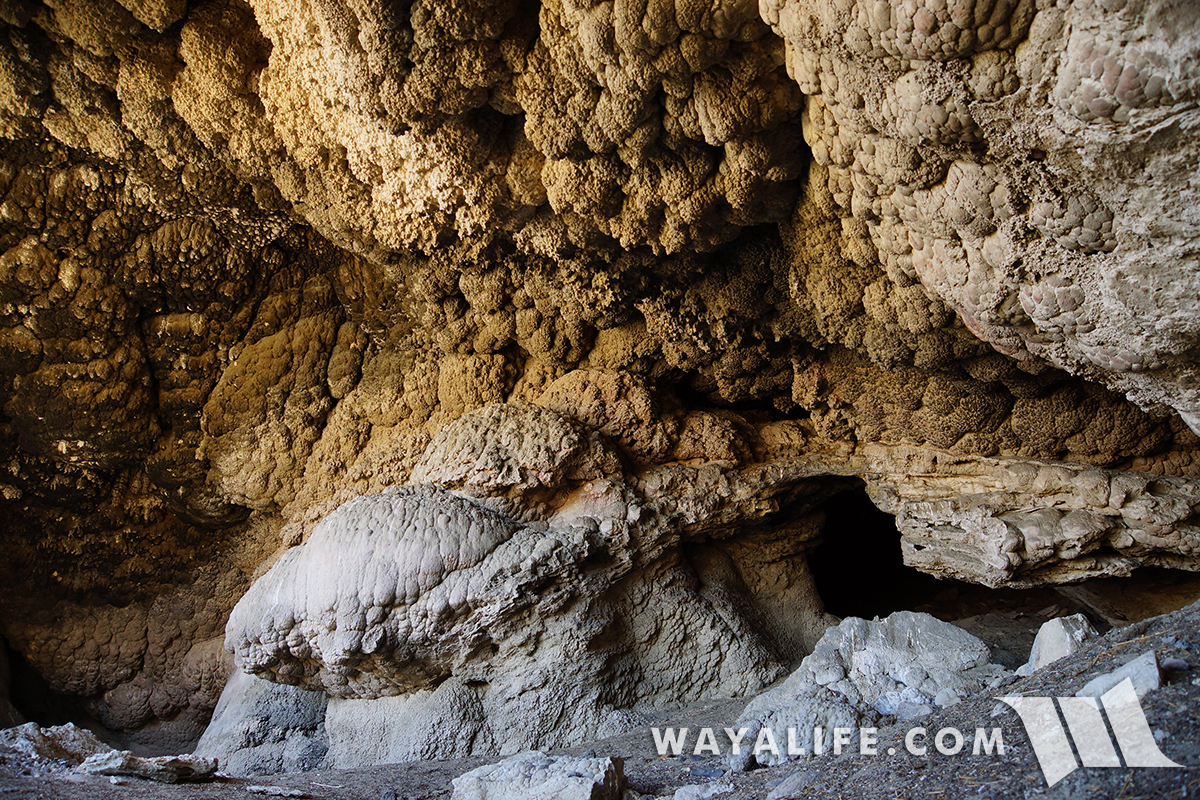
It's hard to tell for sure but the reddish color you see here looked more like marks made by some kind of pigment than something that was naturally occurring. Of course, that's just what I was seeing.
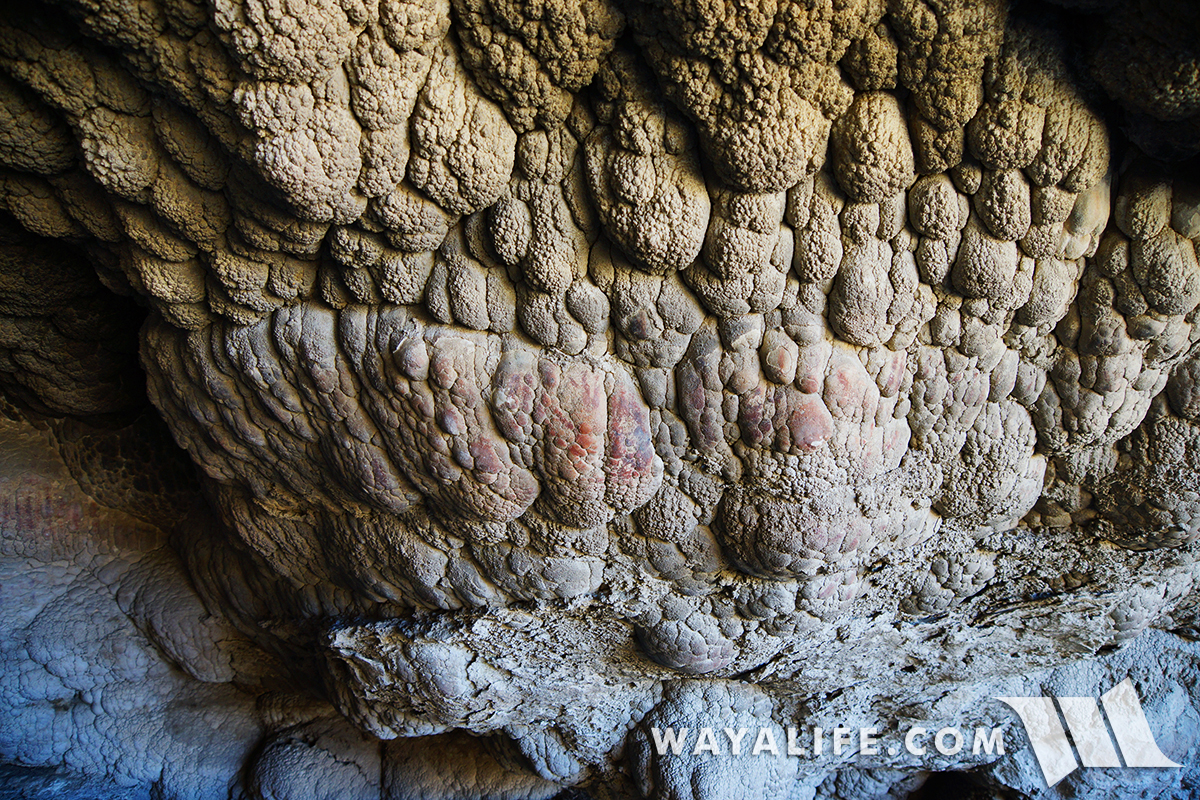
As you can see, the ceiling above was covered in soot from hundreds if not thousands of years of fires burning inside the cave.
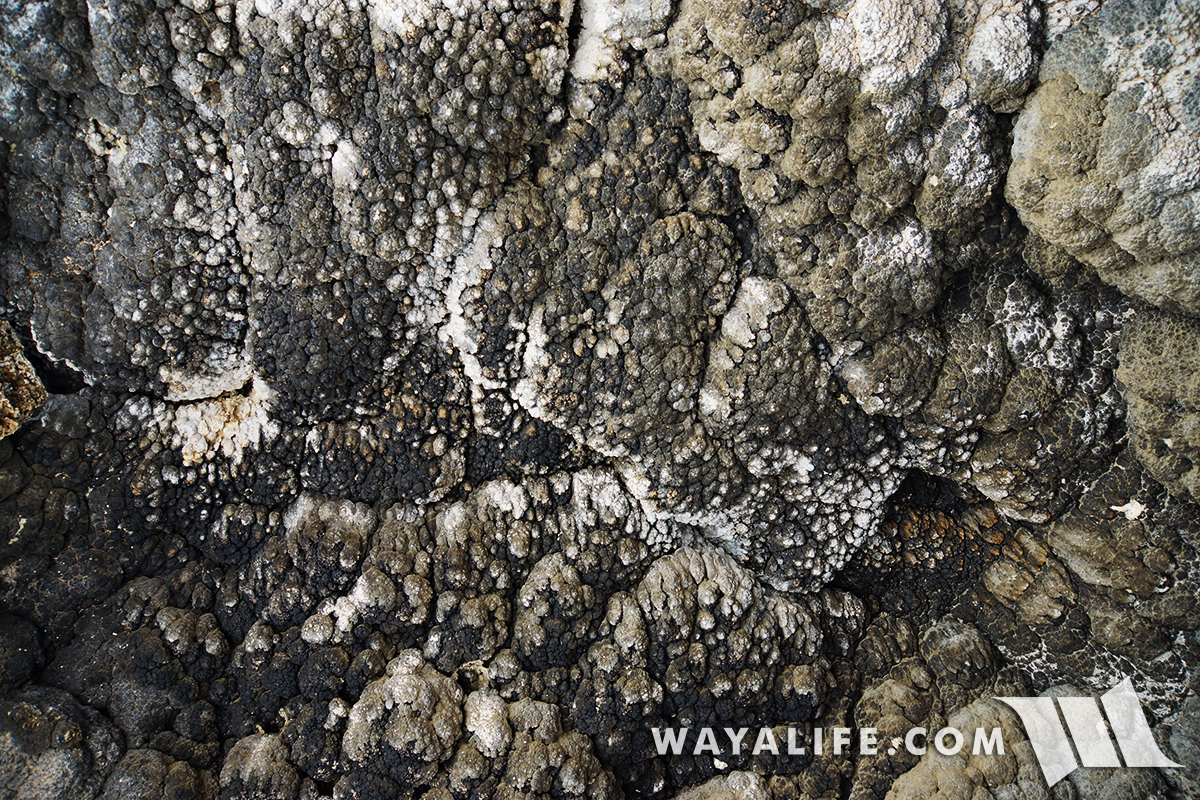
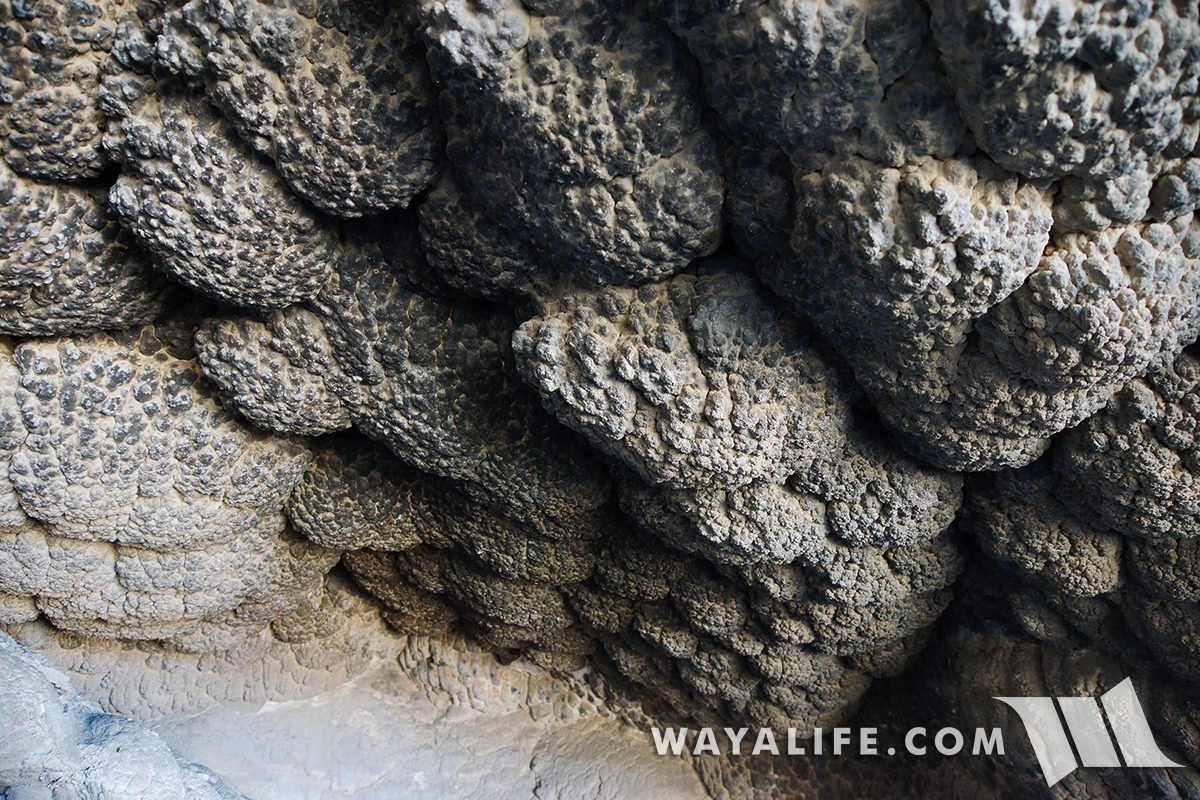
Time to go deeper into the labyrinth.
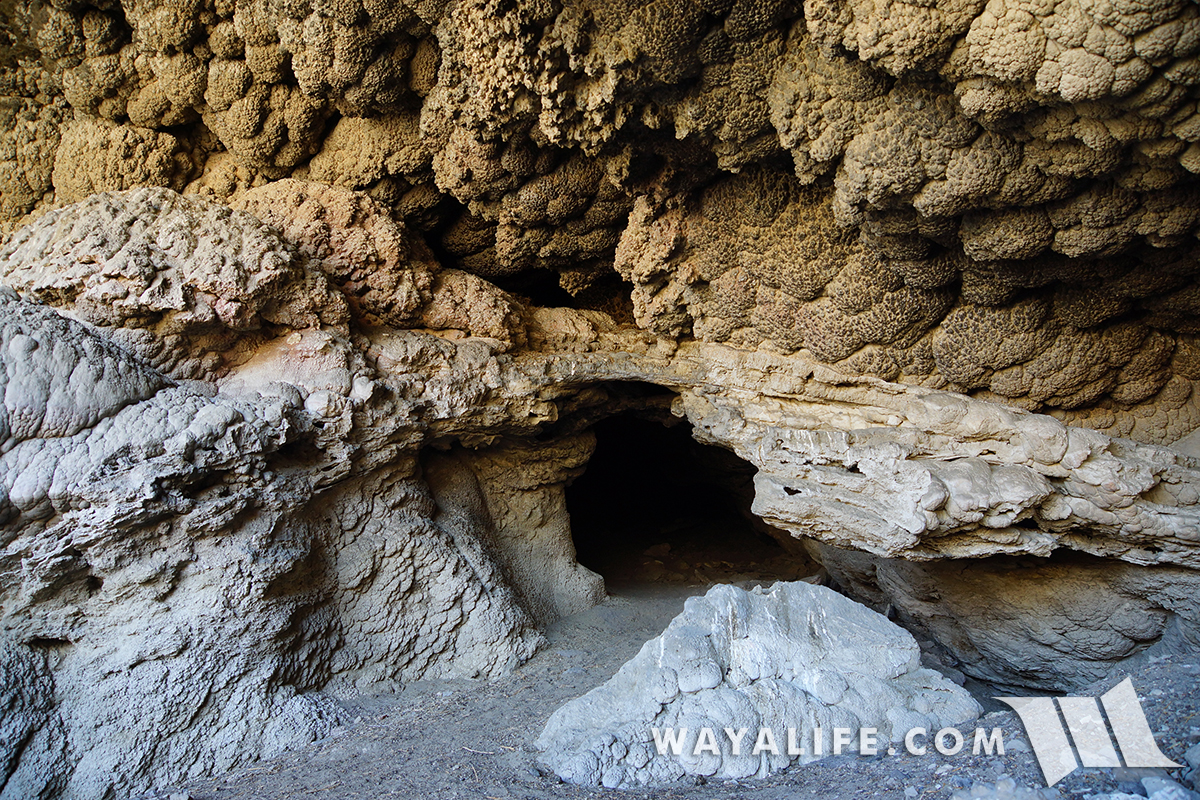
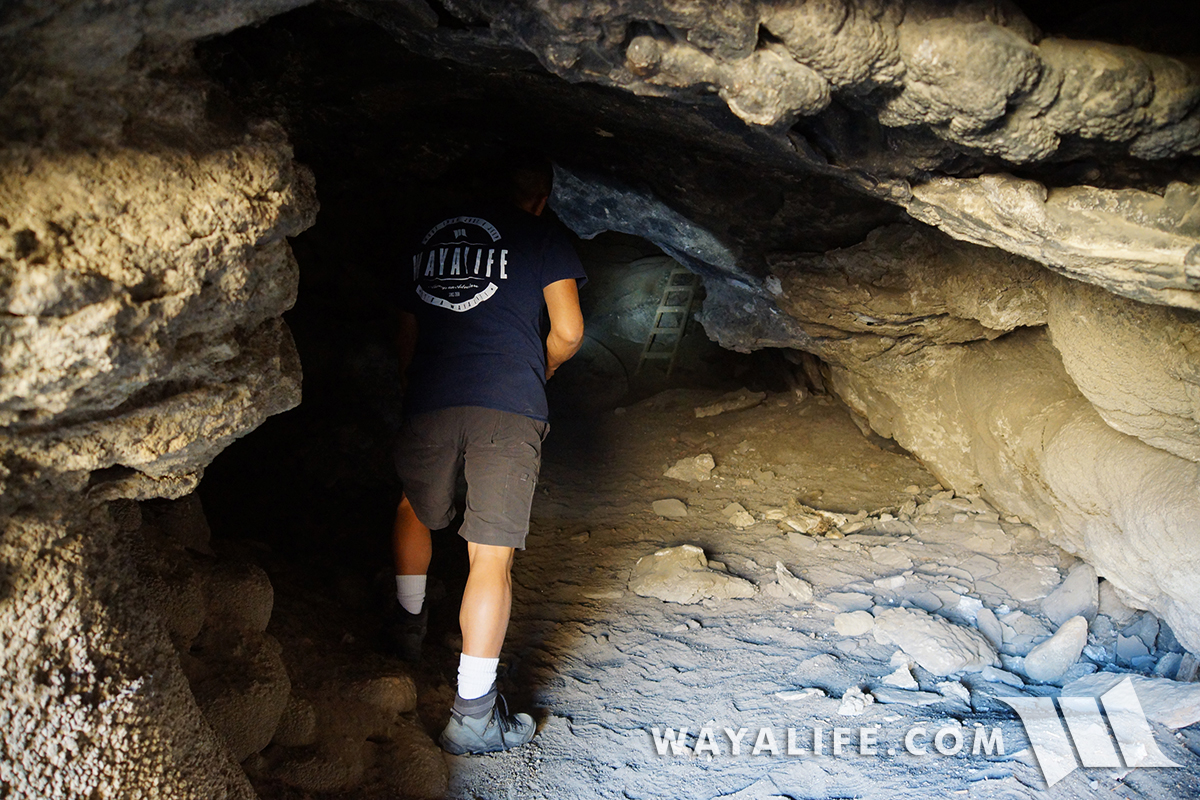
Back in the 1960's, archaeologist came to these caves looking for artifacts and this old ladder providing access to the upper levels was left behind by them.
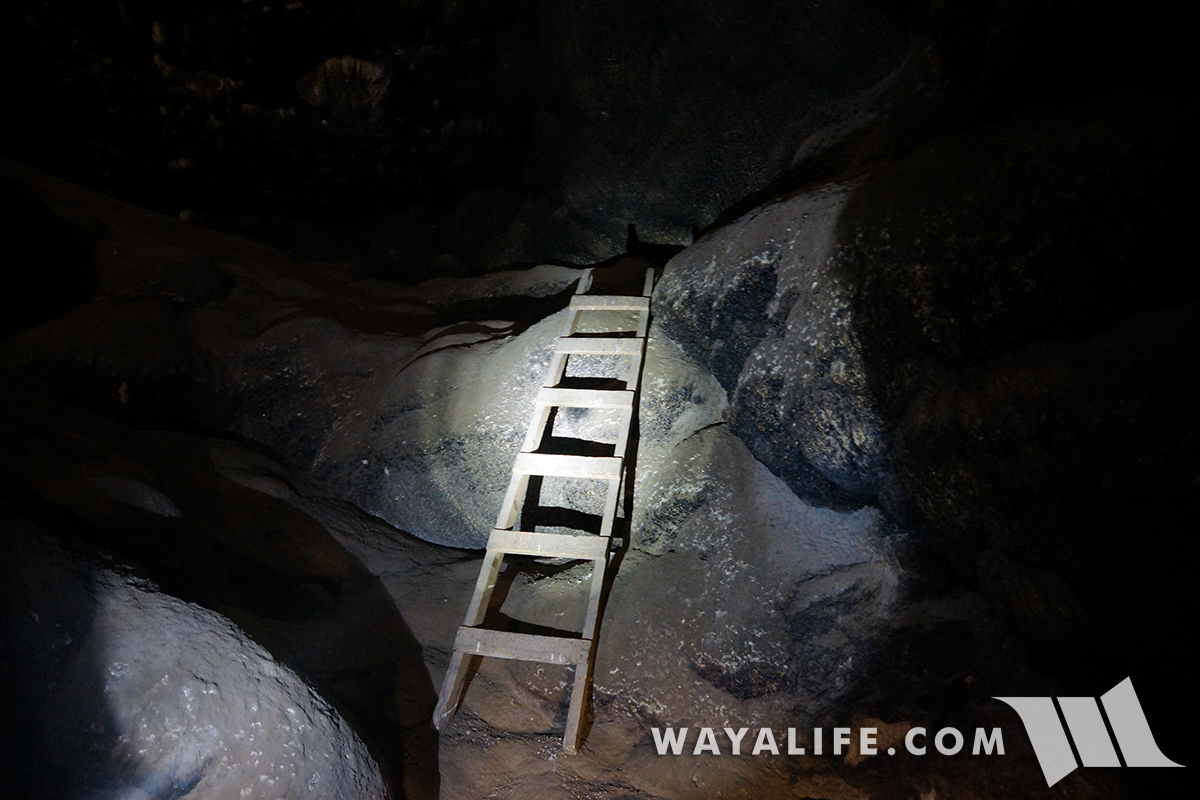
The space inside is surprisingly large and a porthole allowed for good ventilation and some beautiful lighting.
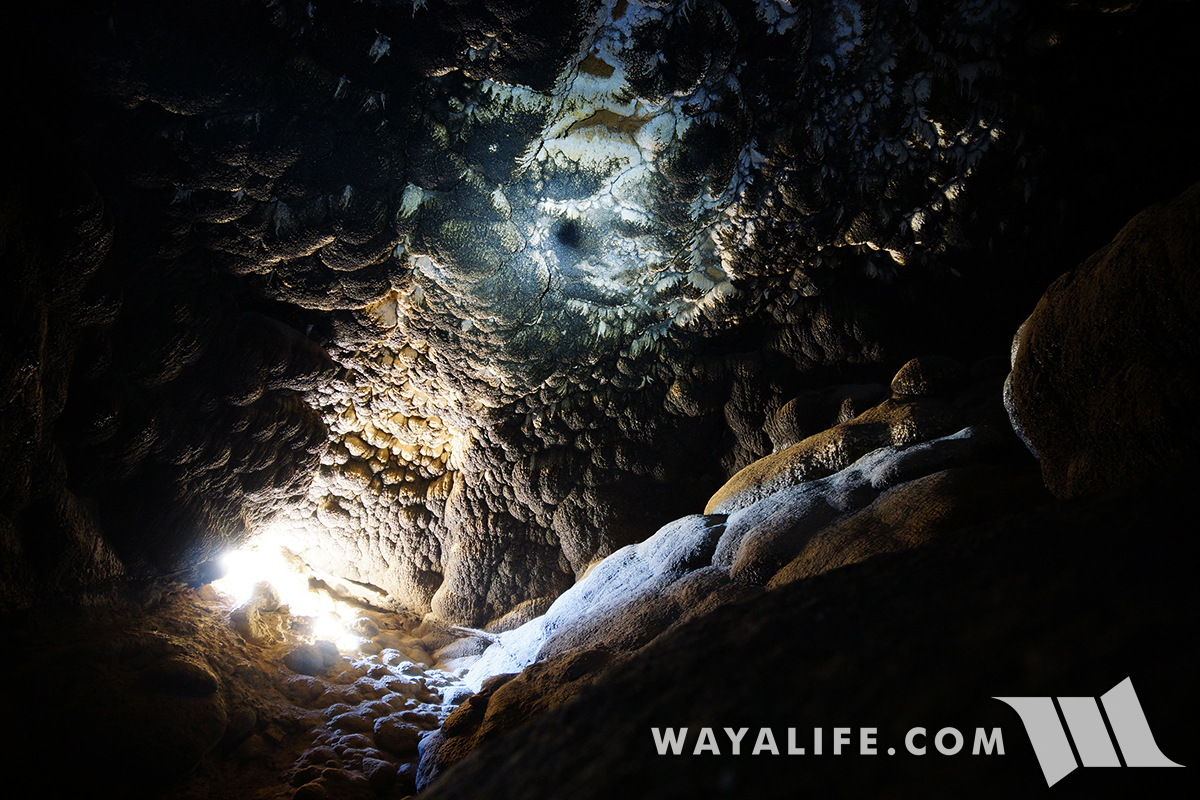
Shot of the soot covered ceiling above.
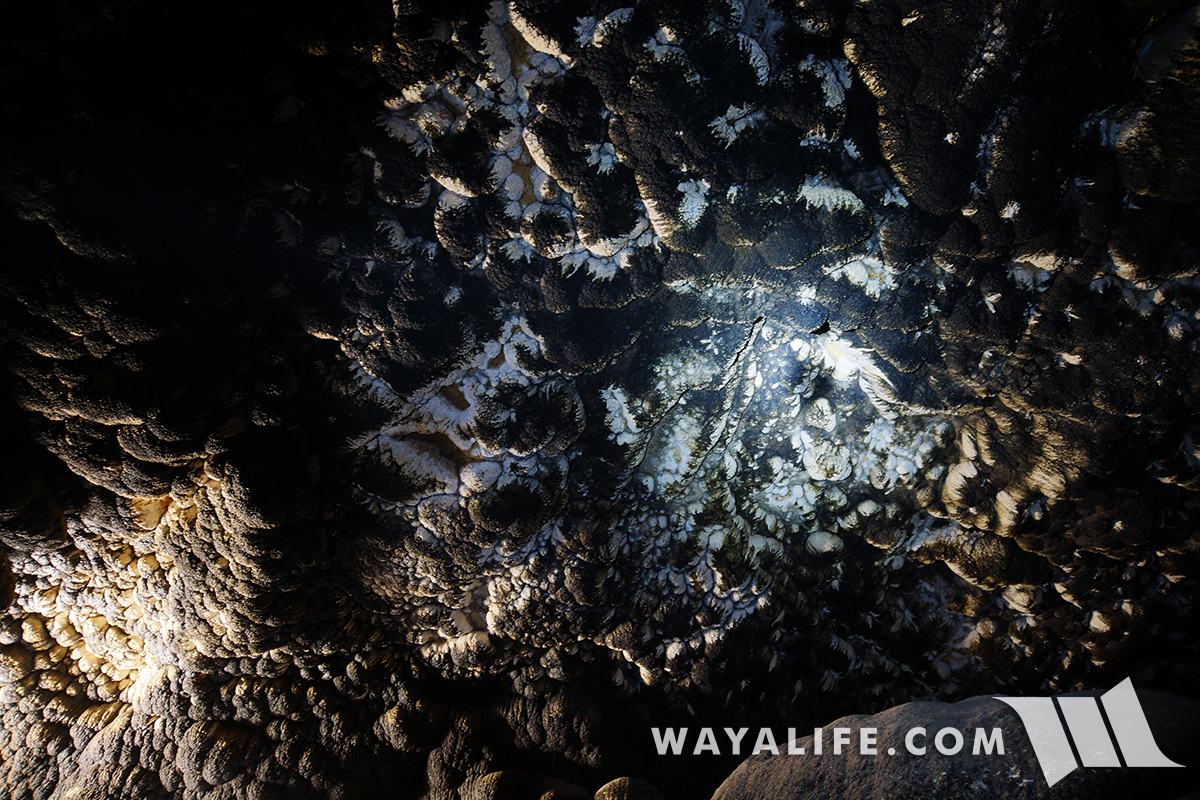
View of the upper level.
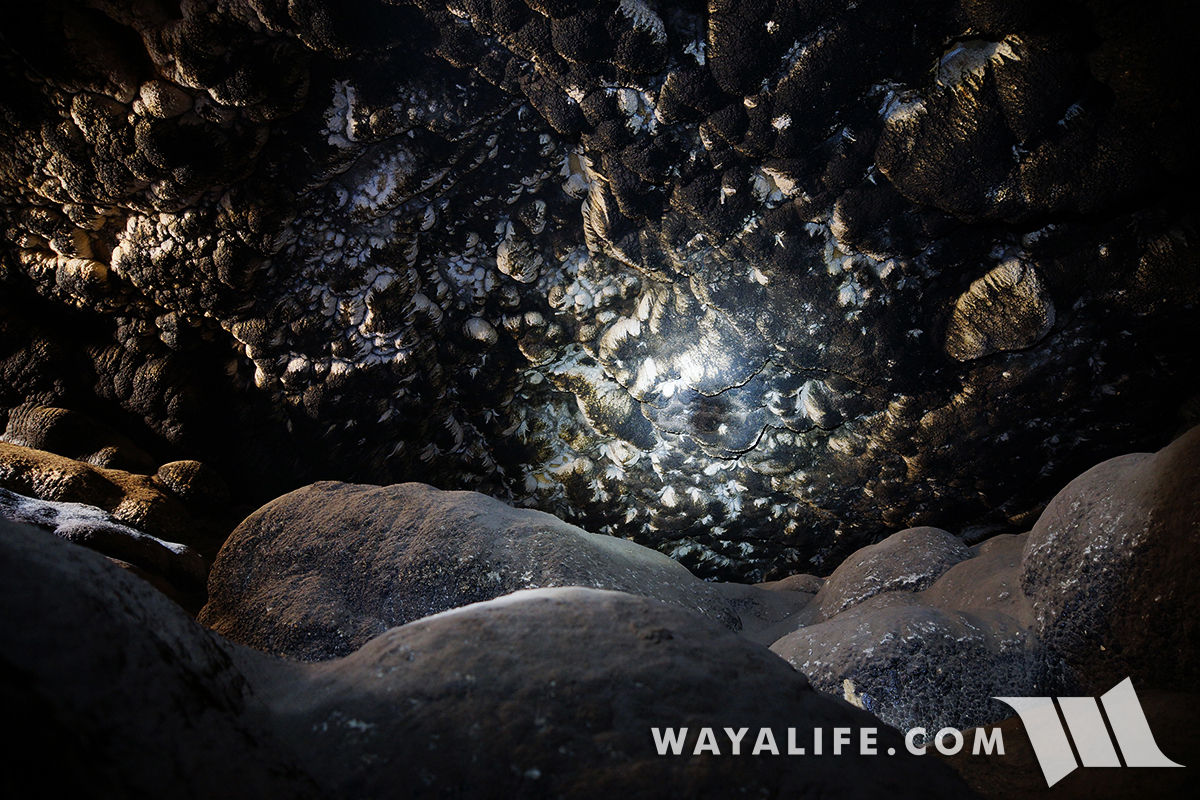
Looking back toward the entrance of the inner cave.
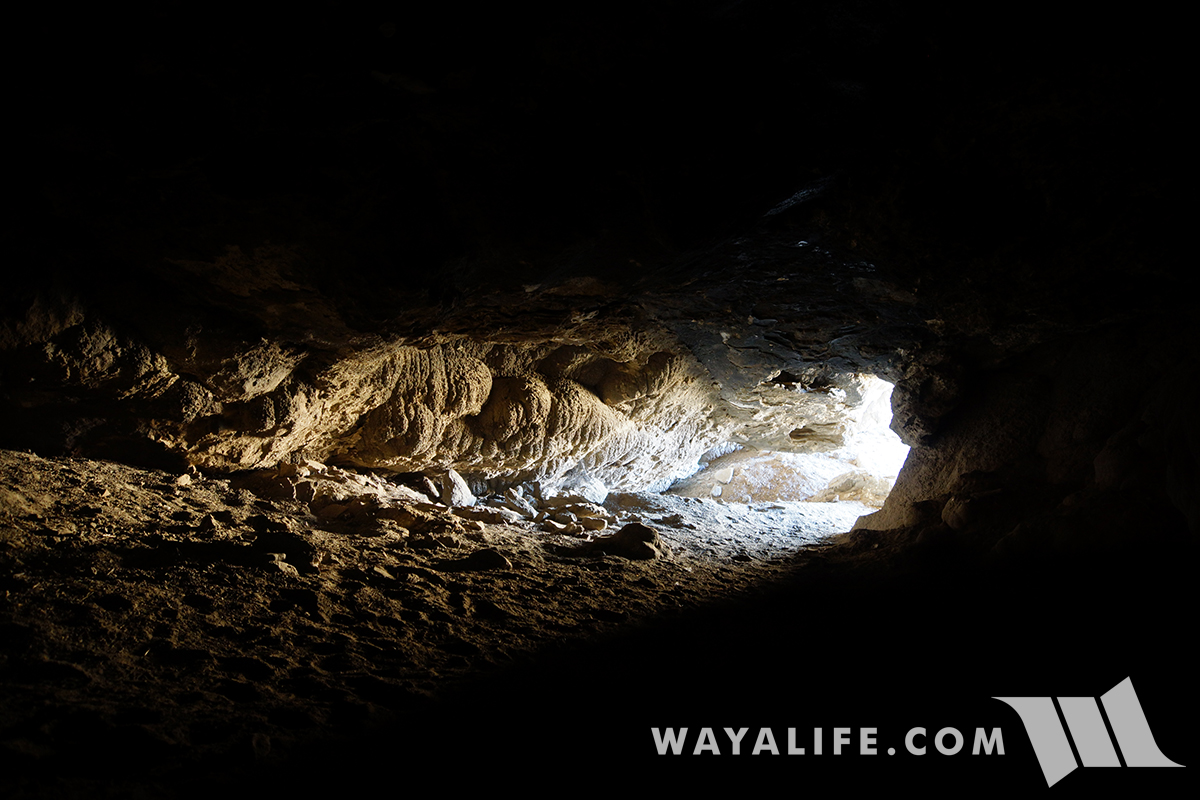
Back in the mouth of the cave looking out and toward our next destination of the day.
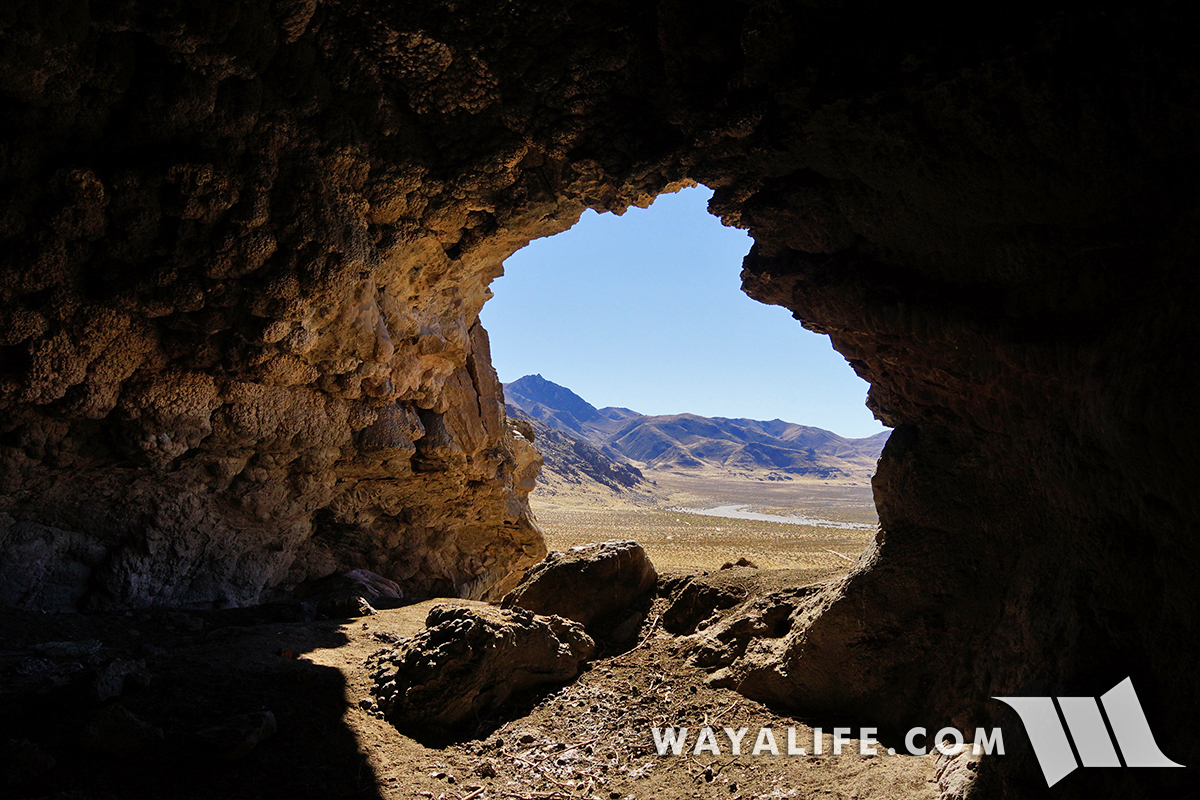
And a shot of Moby down below.
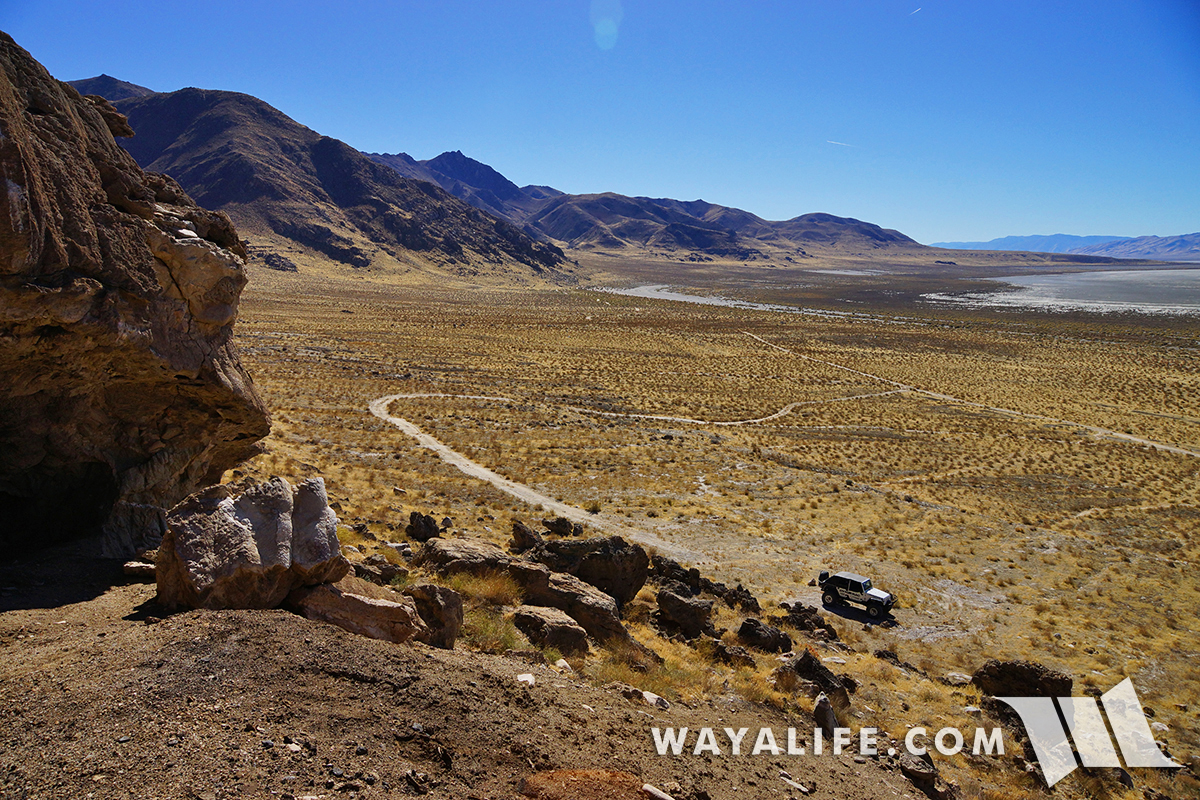
Checking out some of the crumbling tufa encrusted rocks as we make our way over to the next cave.
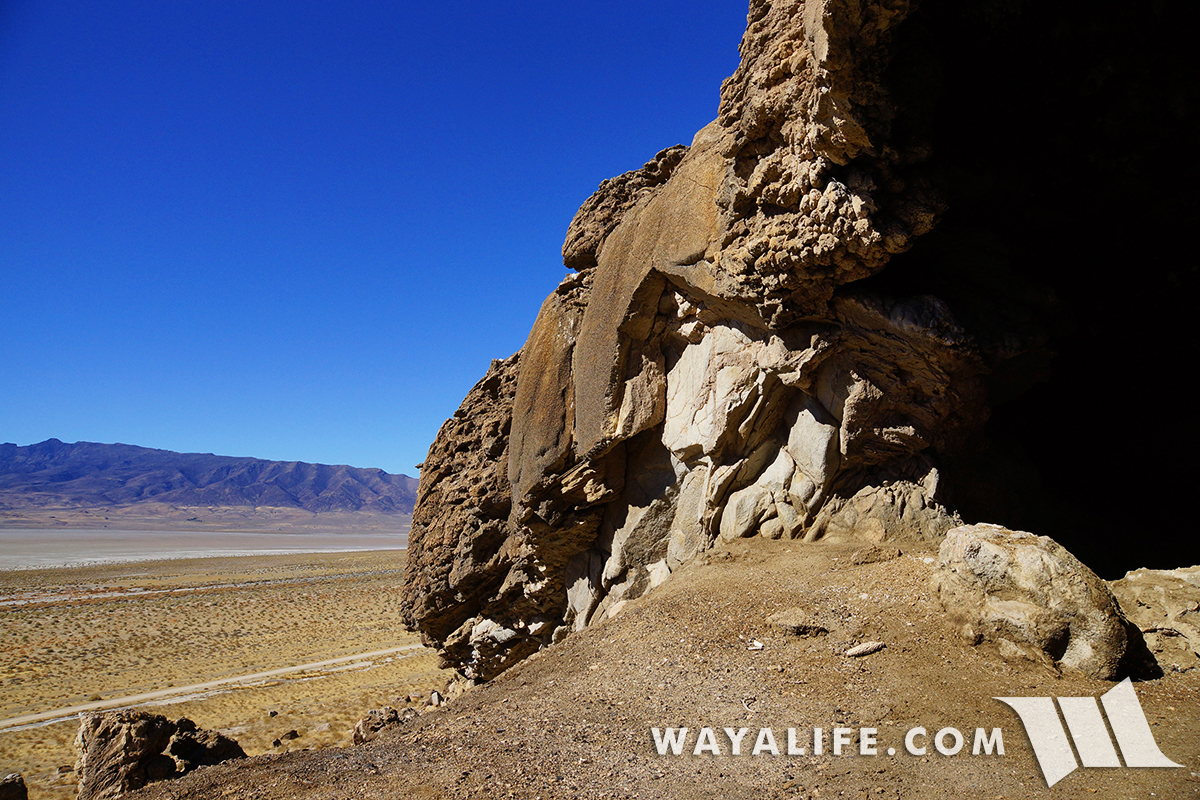
The cave to the north was a bit smaller but still had a cool roof above.
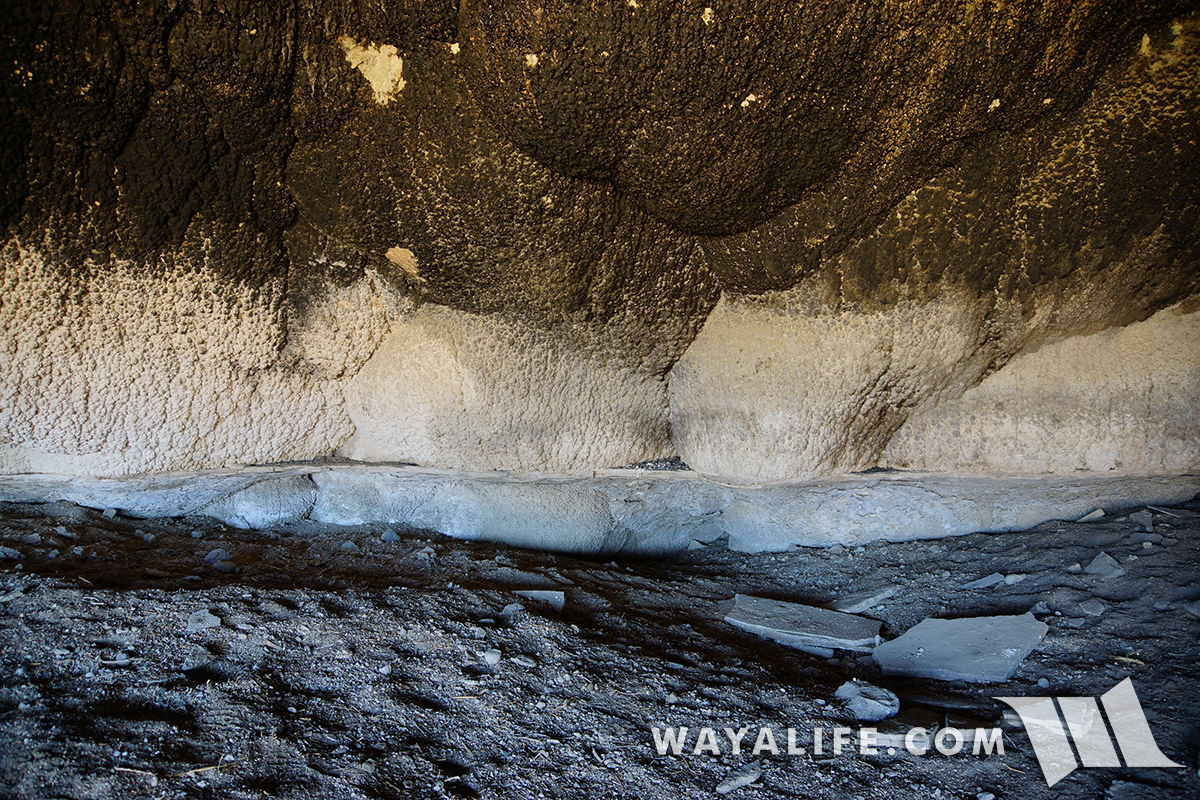
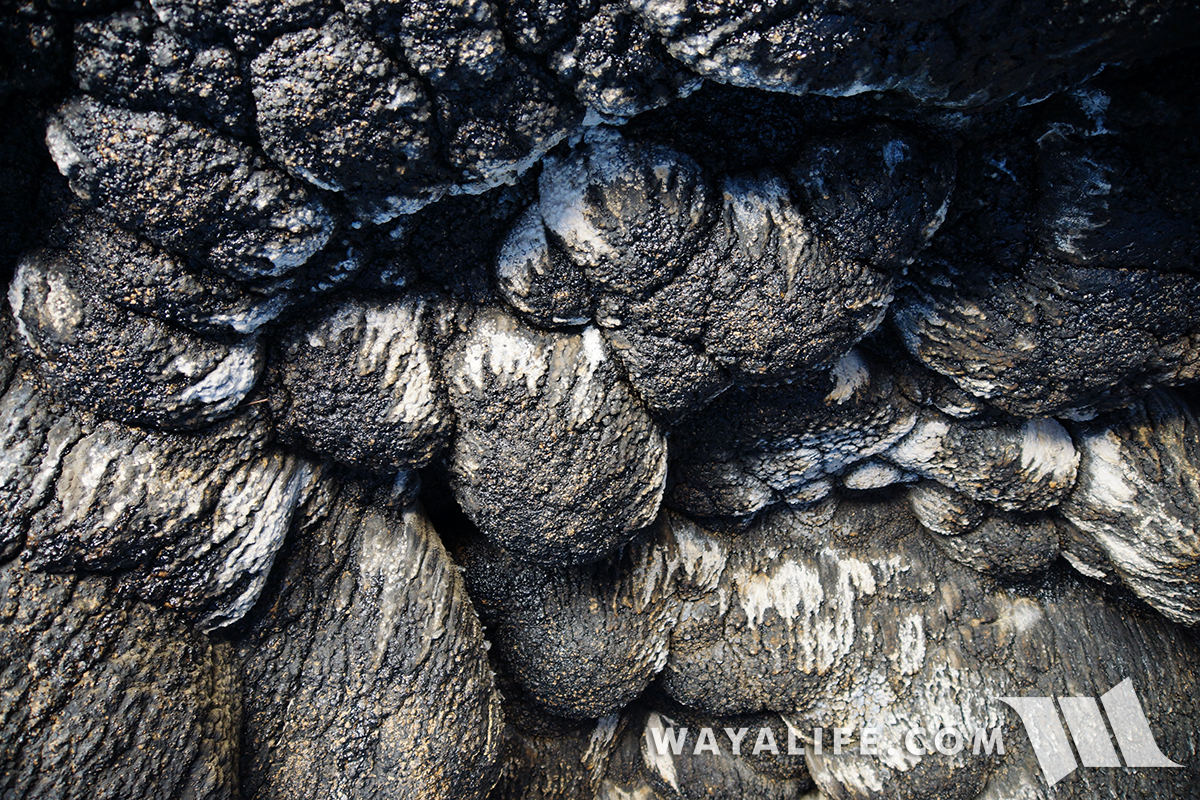
View from the inside looking out.
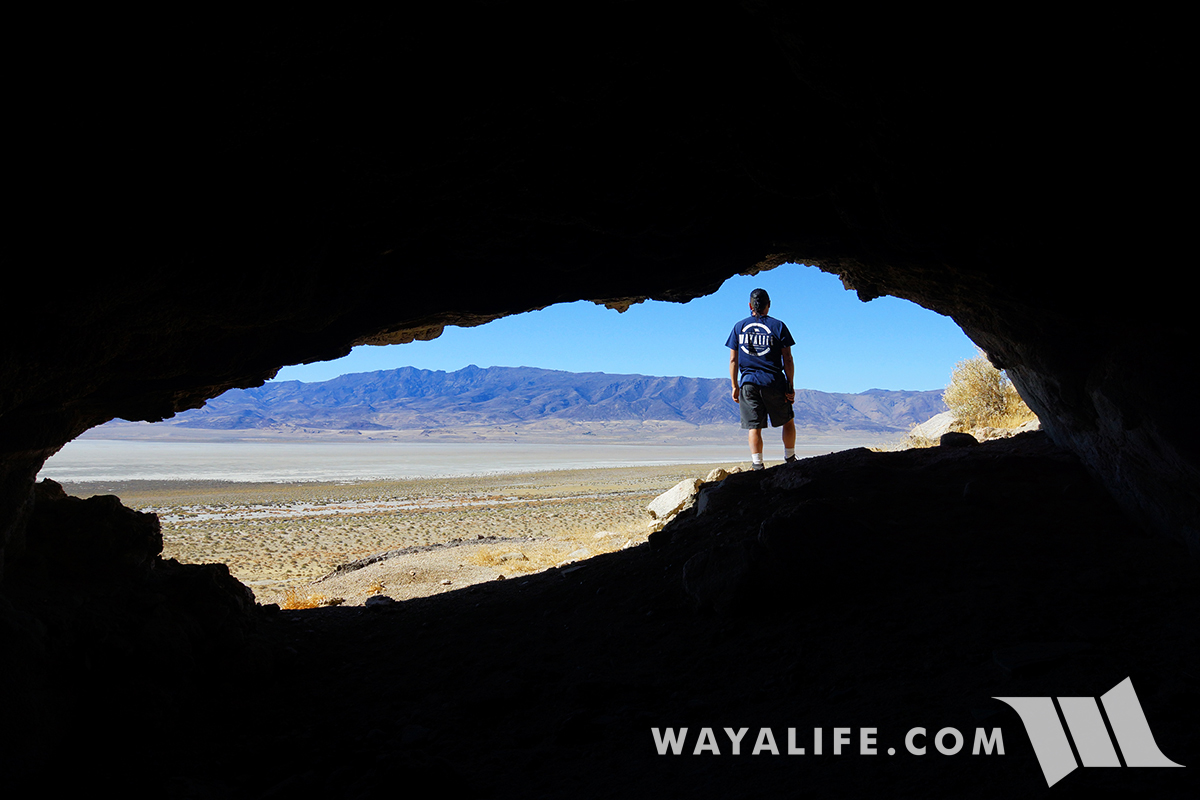
Even on the outside, the tufas look alien and like something out of a science fiction movie.
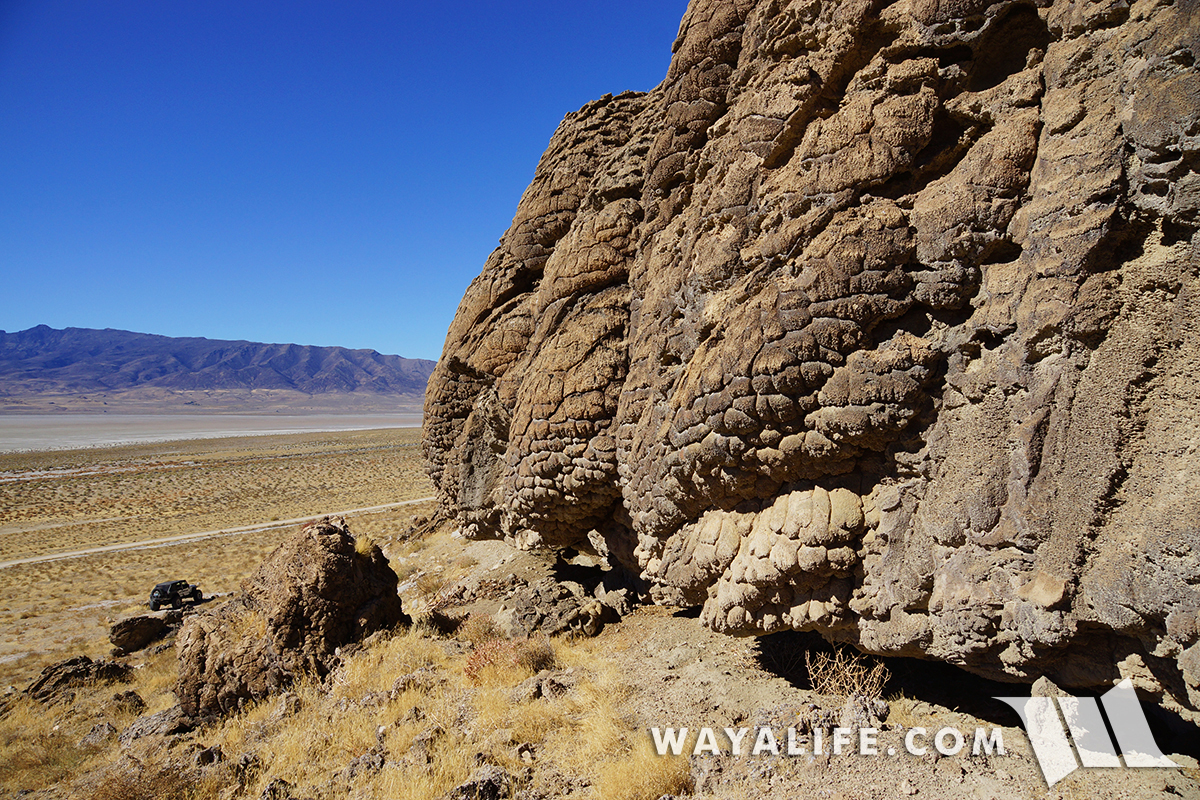
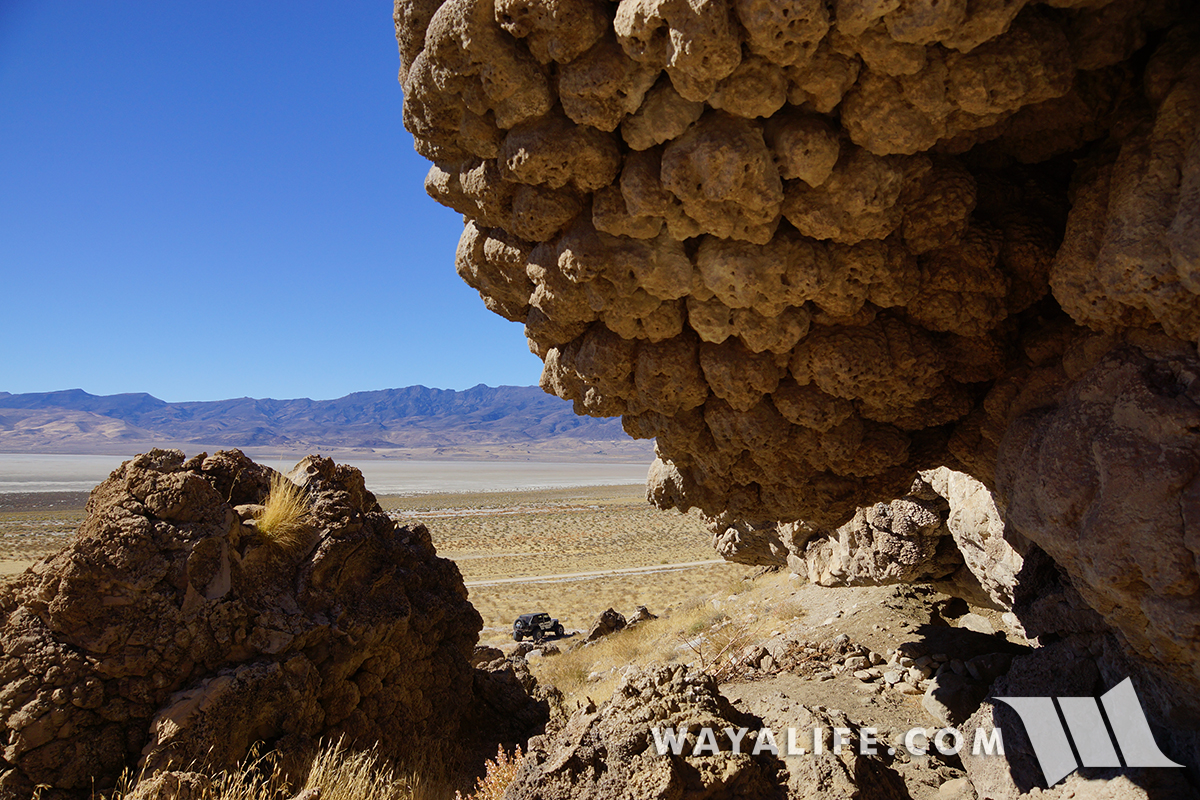
WHO are you looking at? Found this guy in one of the smaller shelters.
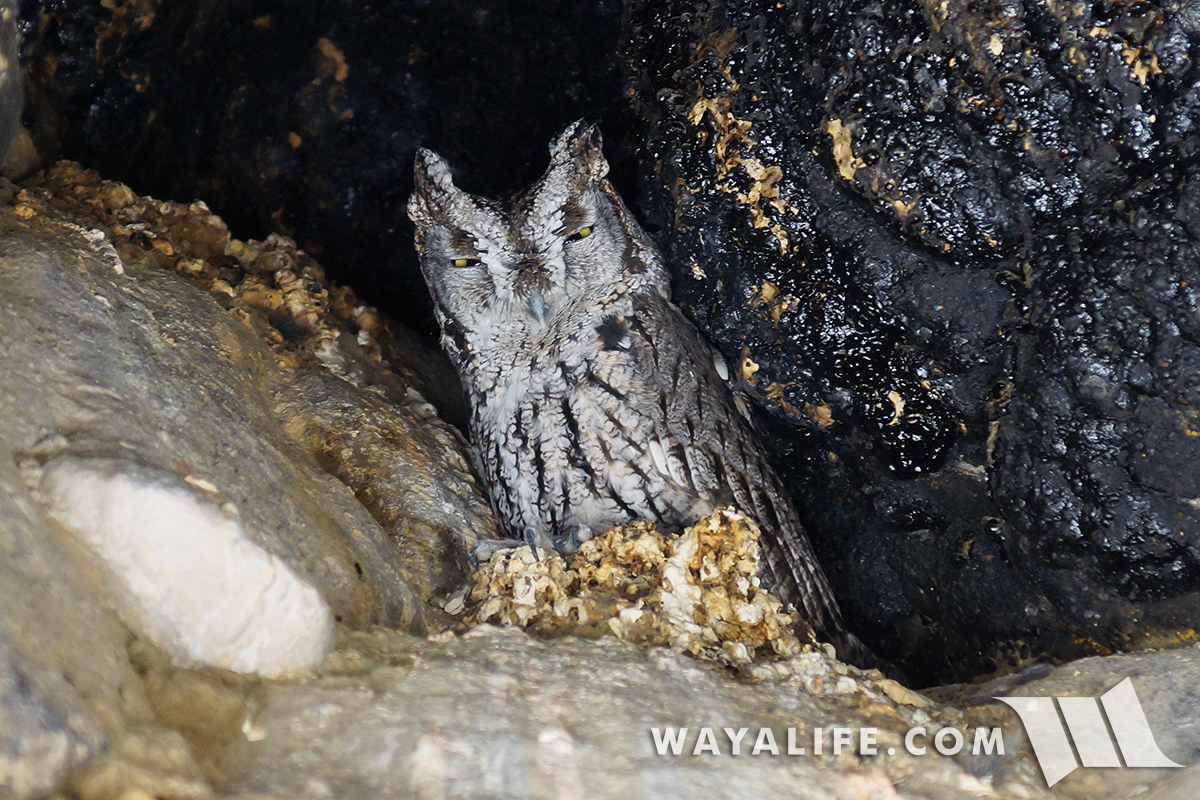
It was a ton of fun exploring the old rock shelters but it was time for us to head up to our next destination... way up!
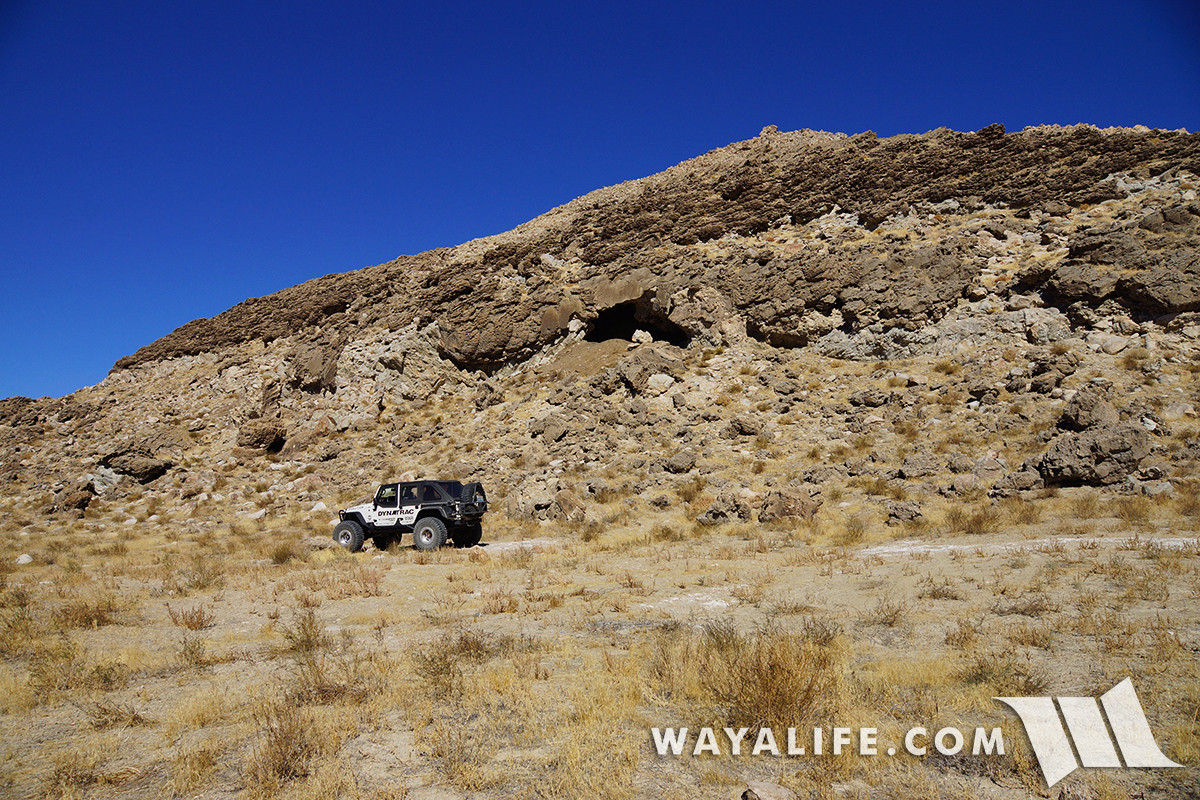
After climbing over 2,000 feet from where we were earlier in the day, we set out to explore a cool old mining camp.
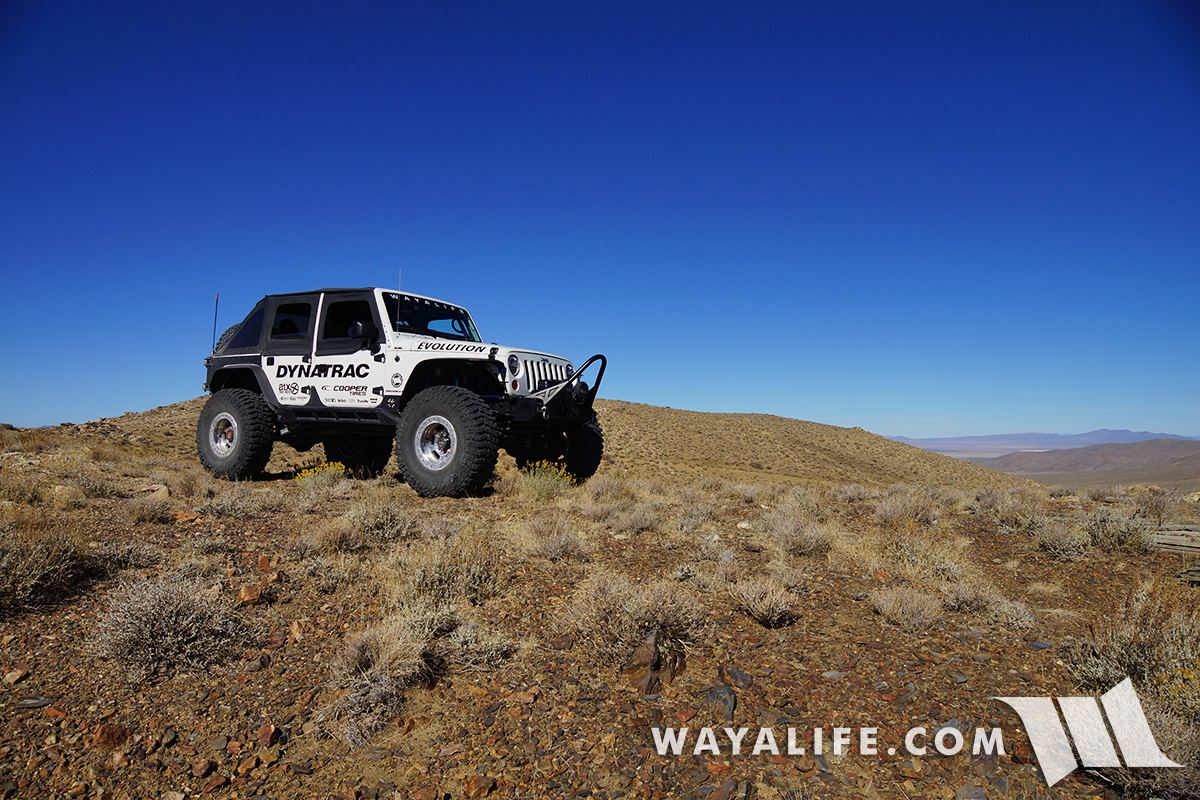
Not a whole lot remains here but there is still one cabin still standing.
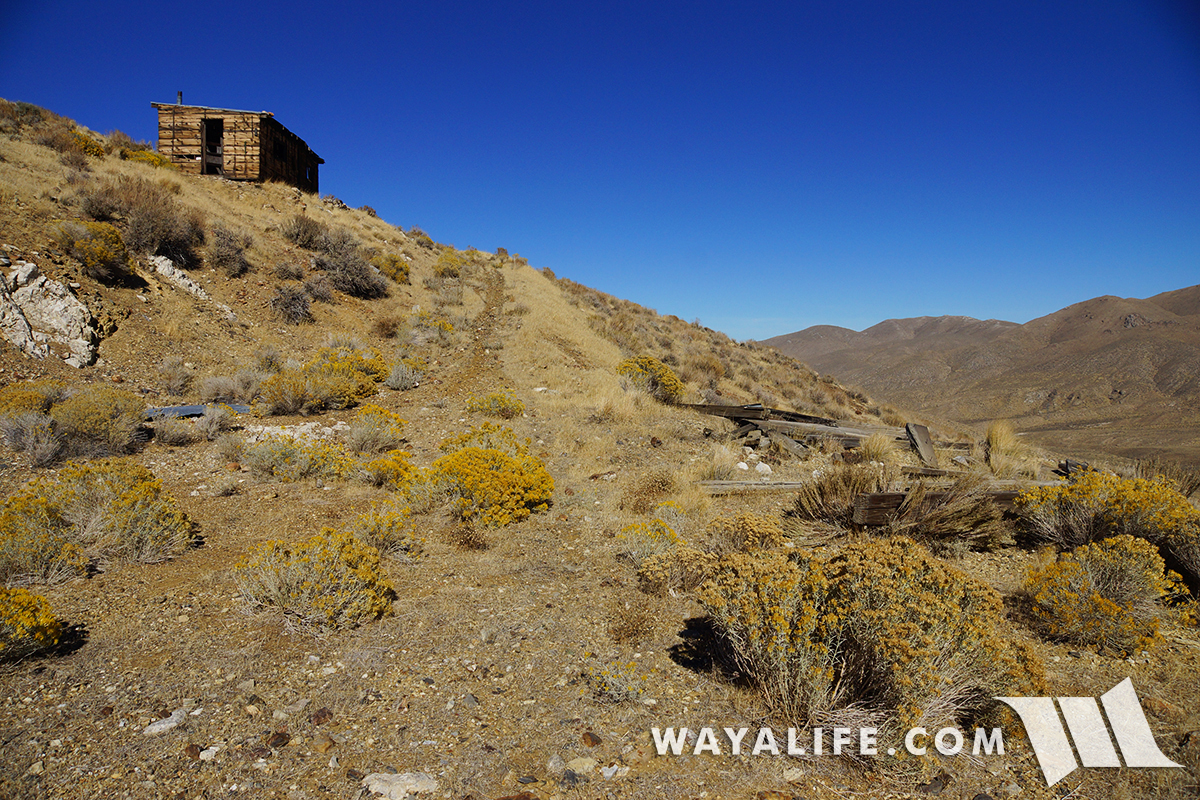
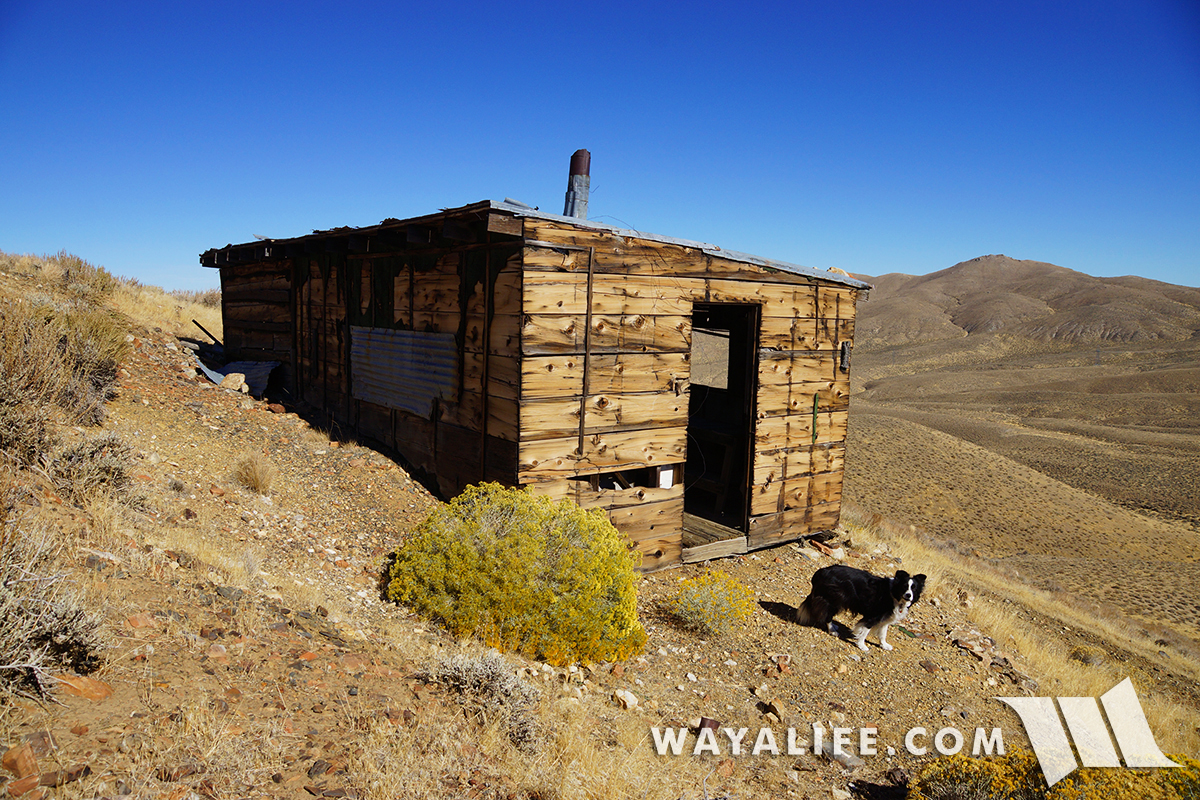
Knock knock - anybody home?
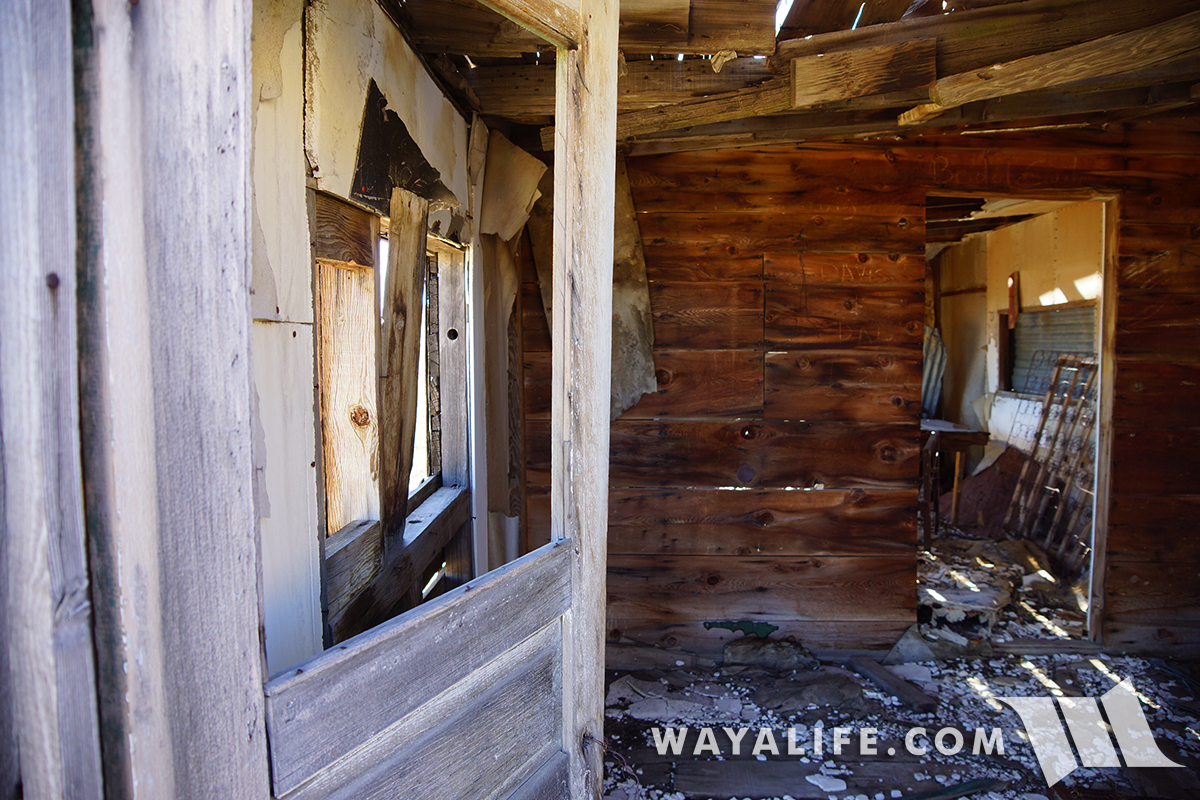
It's nice to see that even old miners back in the day took some time to decorate their cabins with some wall paper.
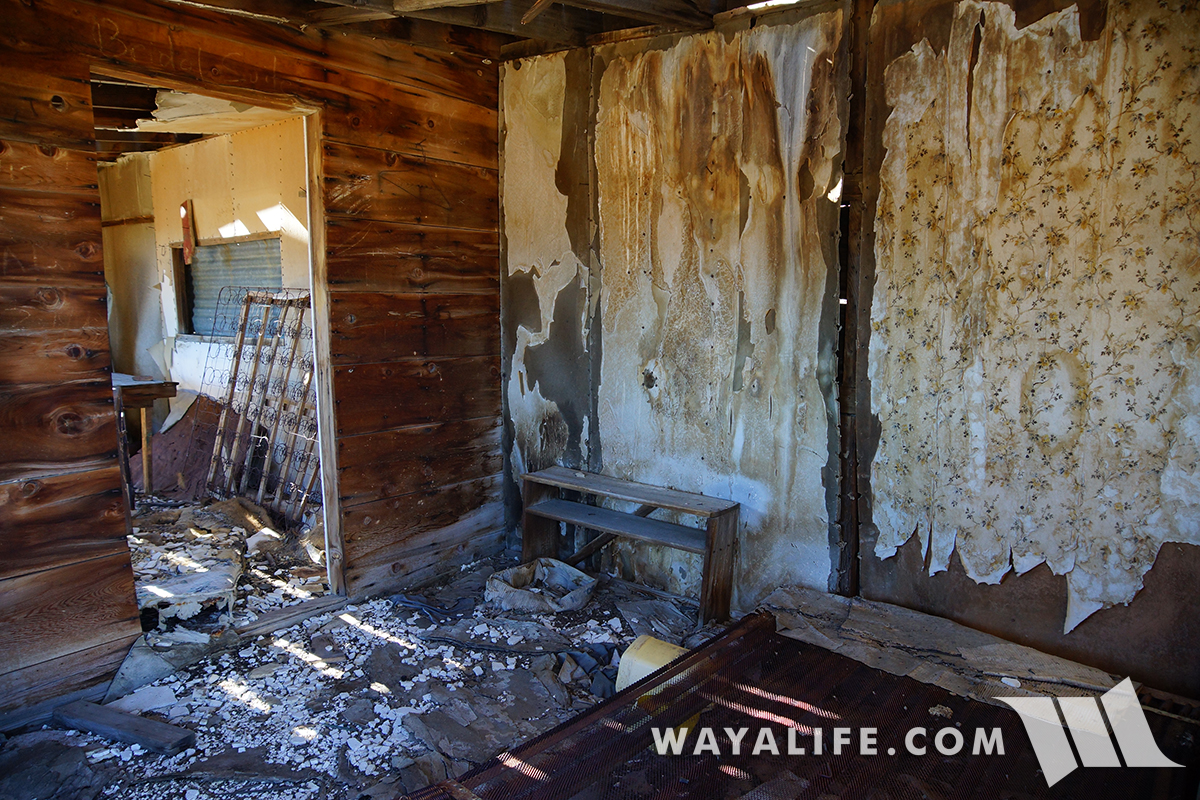
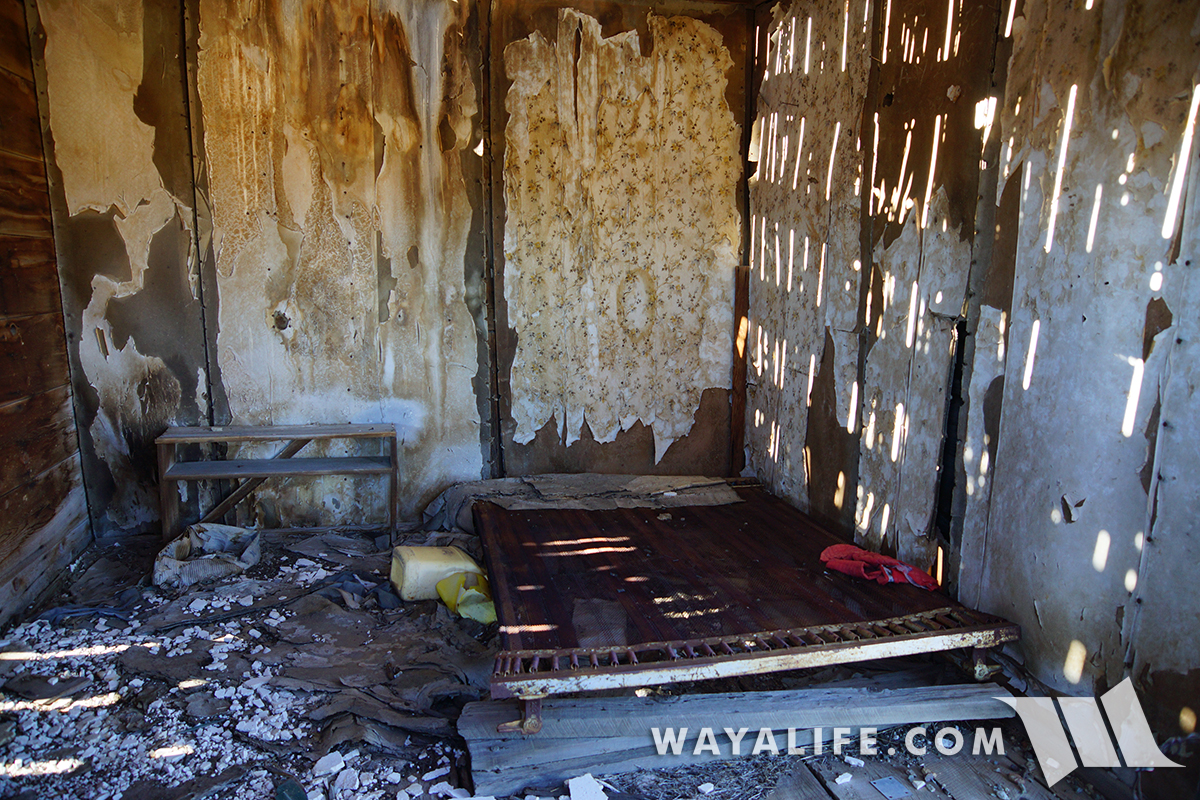
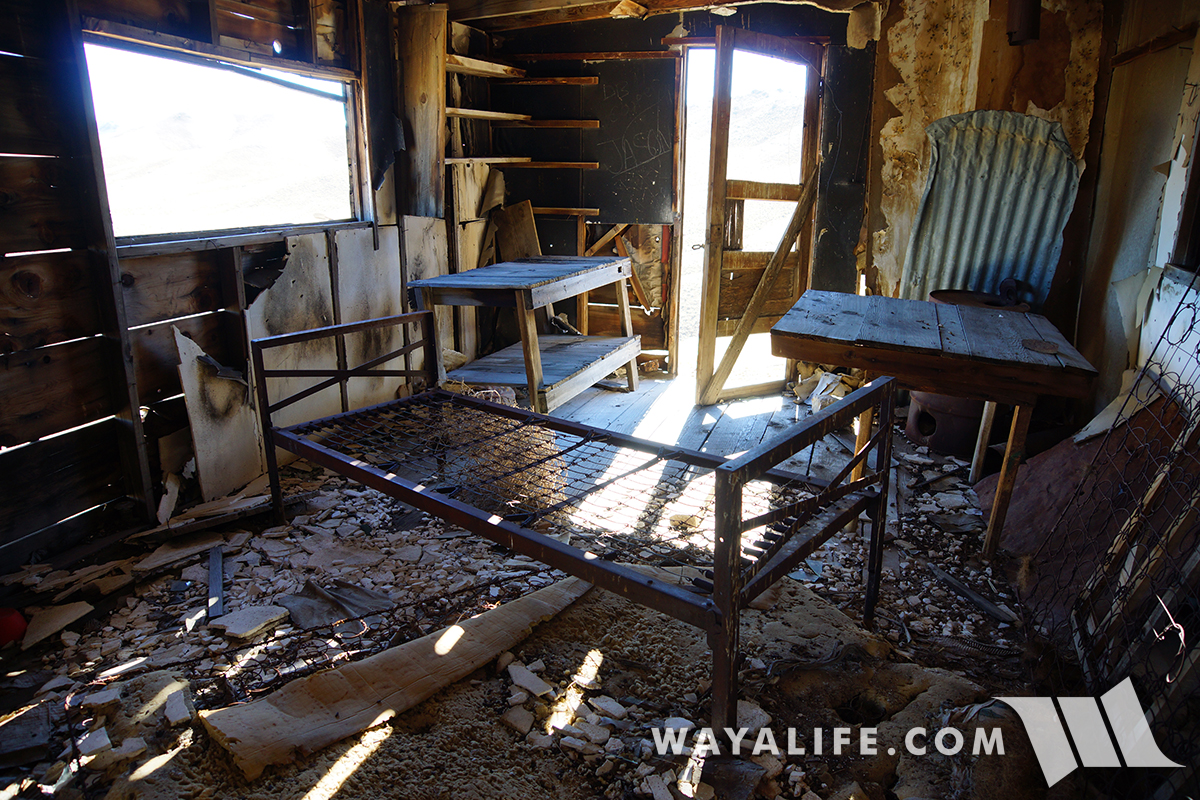
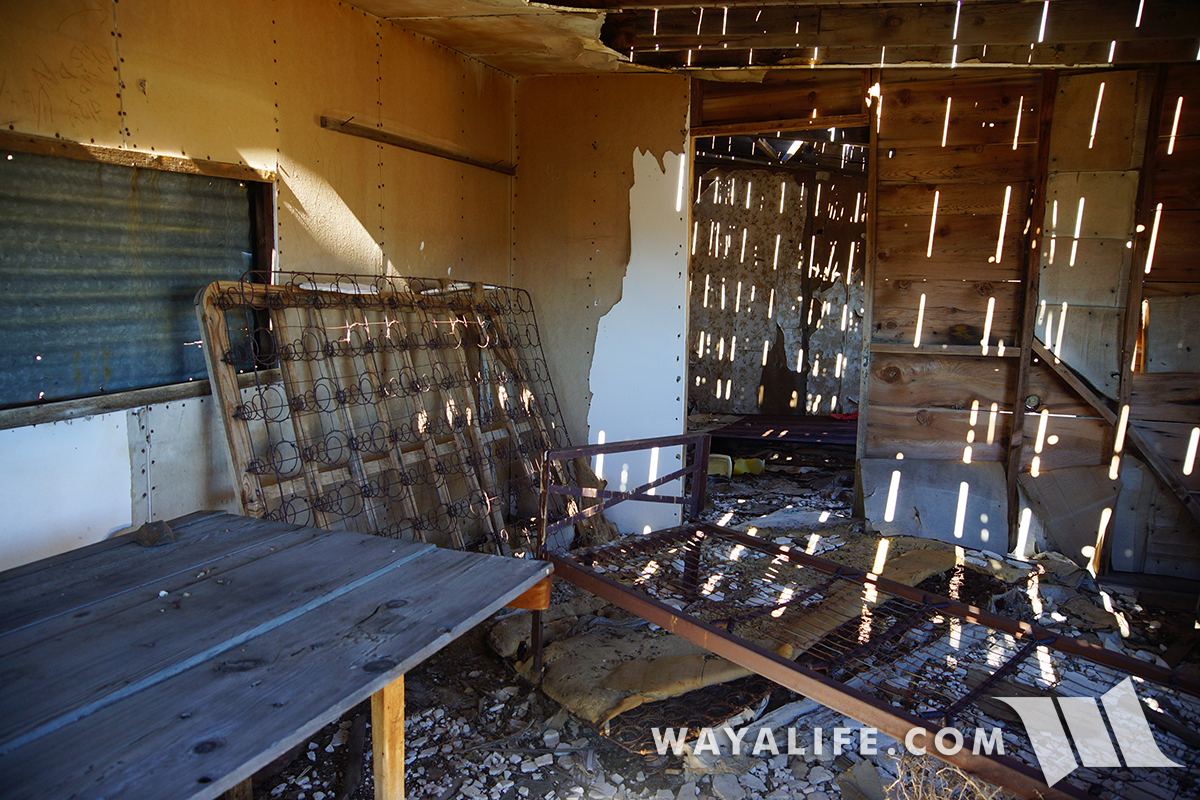
Here's the old mine. Not sure what the CBJ stands for but the paint isn't new and I can only assume the original miners put it there.
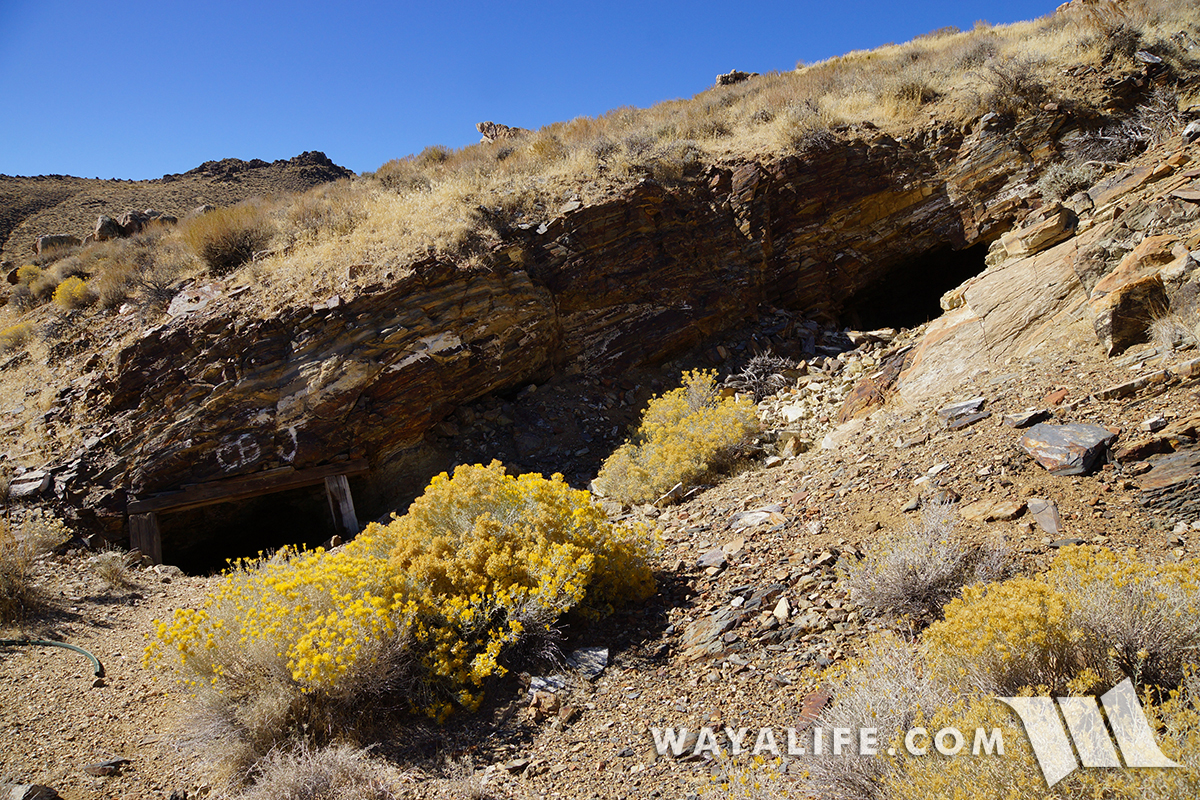
This shaft slopes down at an odd 30° angle and has a rickety old ladder with missing rungs to help you down it. I decided against going into it.
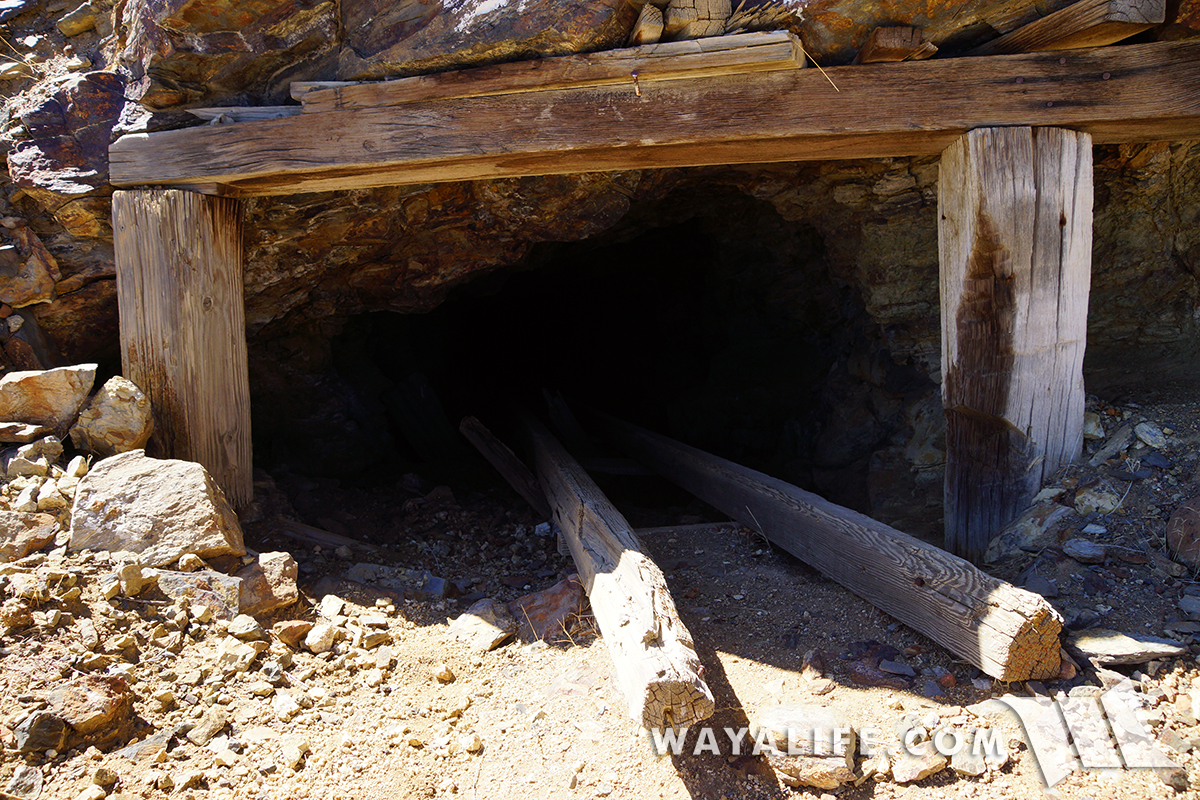
These look like they've been holding up well for a long time. With a swam of bats flying around my head, I decided to ventured into it.
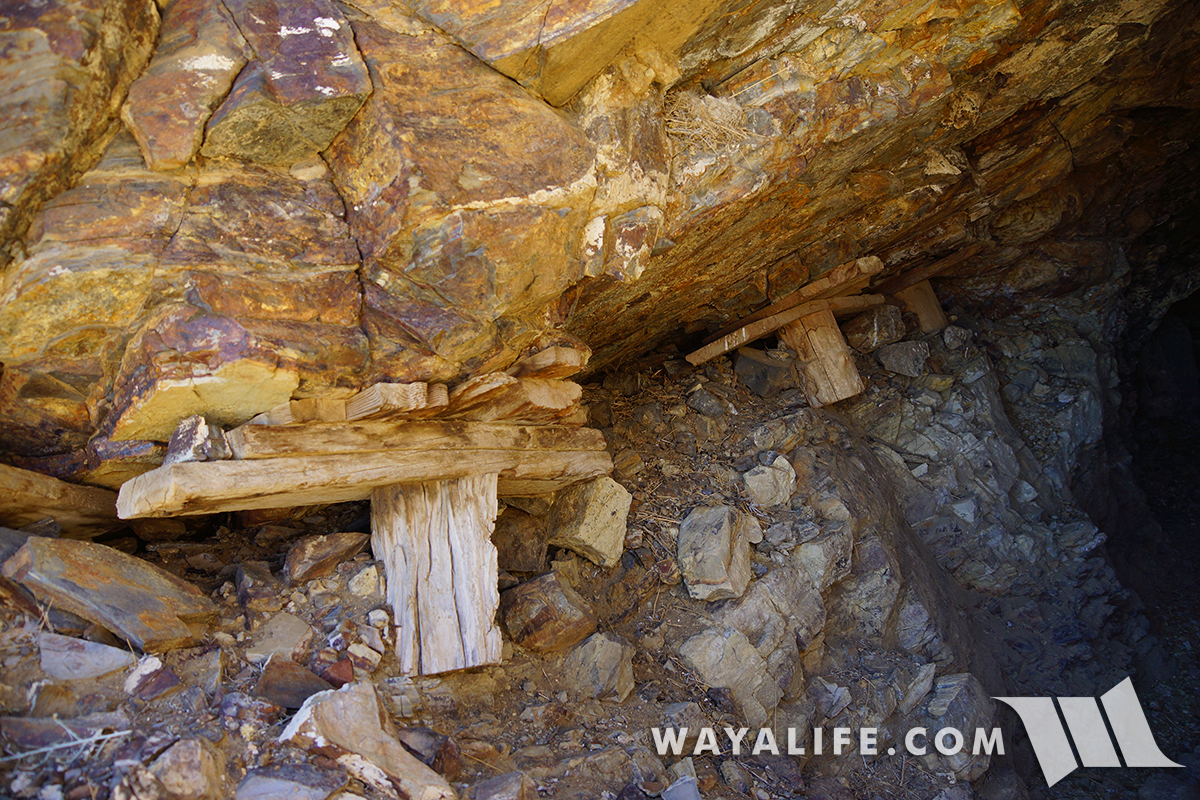
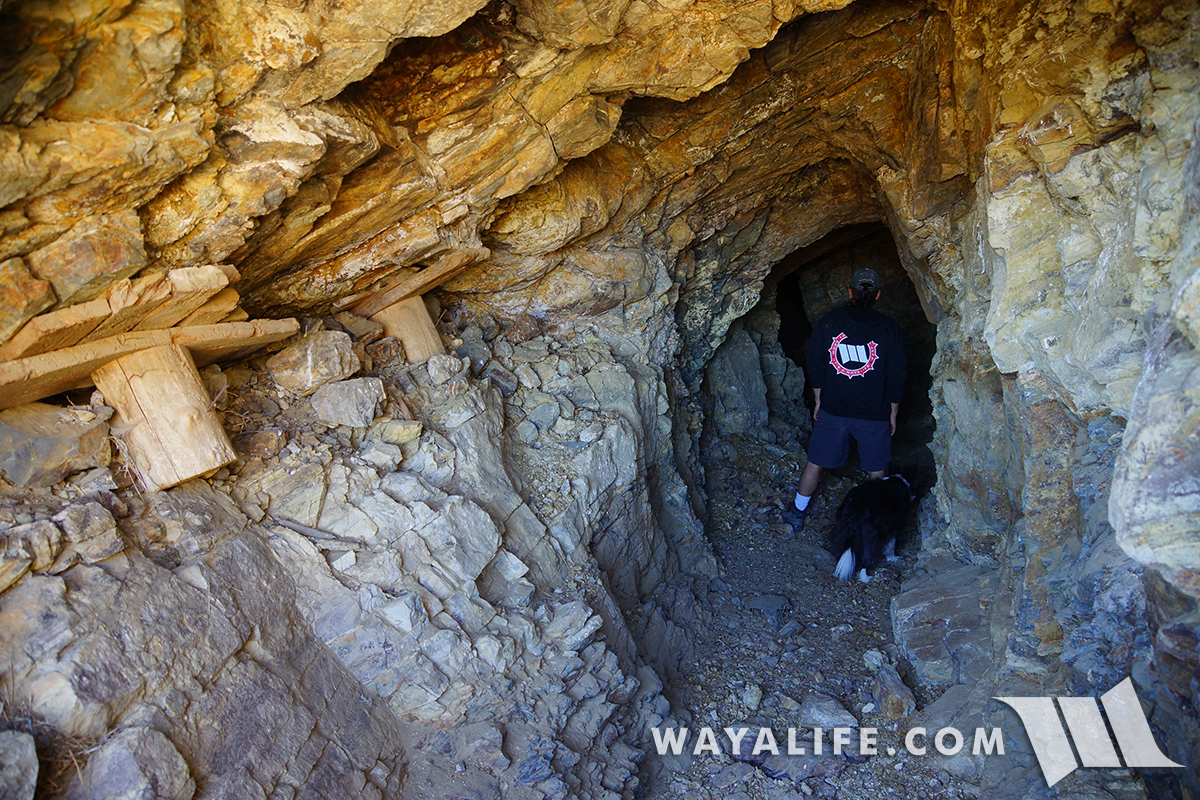
After exploring the old mine, we started our hike out to the tallest point in the Nightingale Range, Mclane Peak.
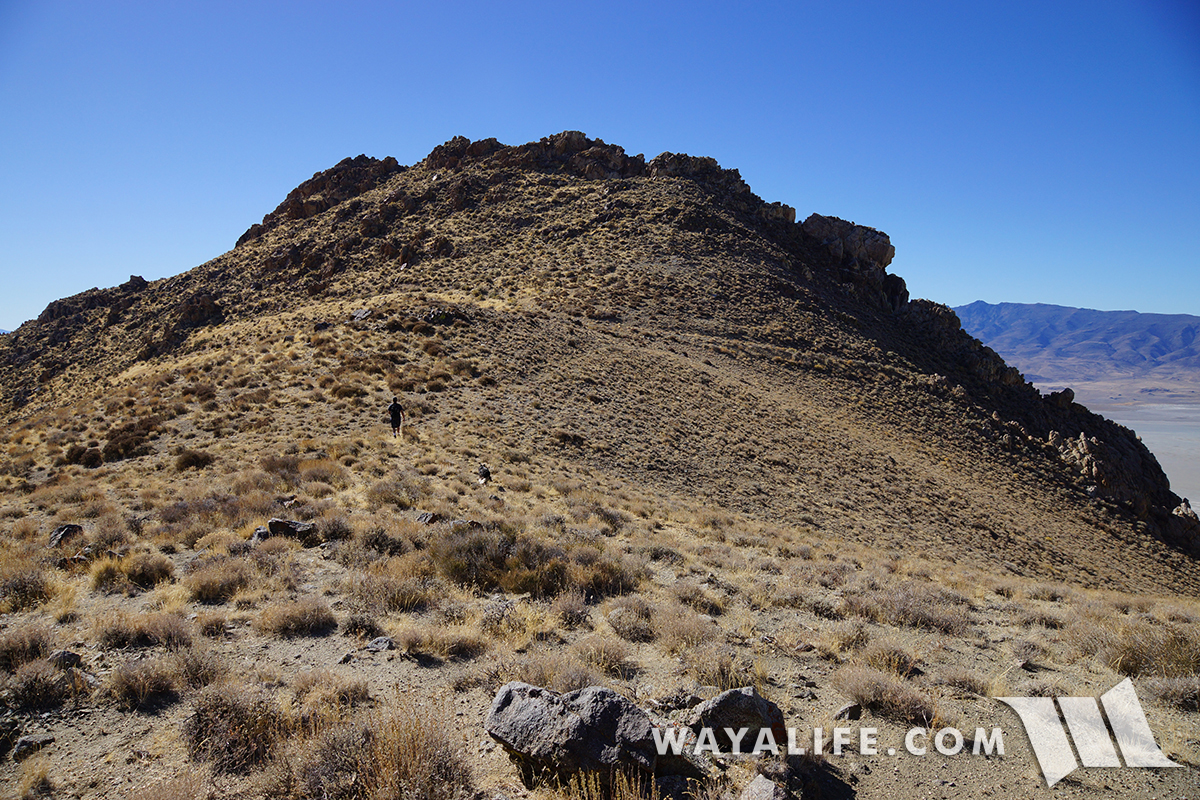
The views along the way were simply breathtaking.
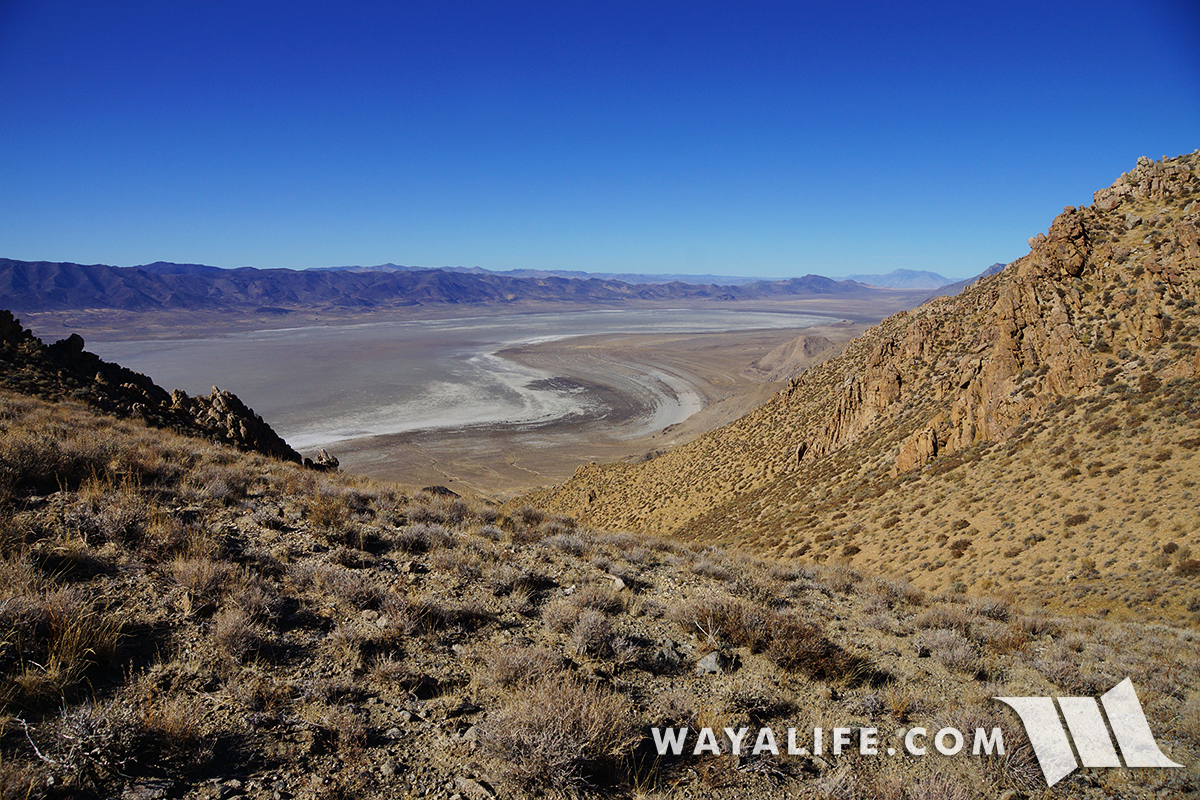
Standing on top of one of the many rocky peaks next to Mclane Peak looking out across the dry Winnemucca Lake.
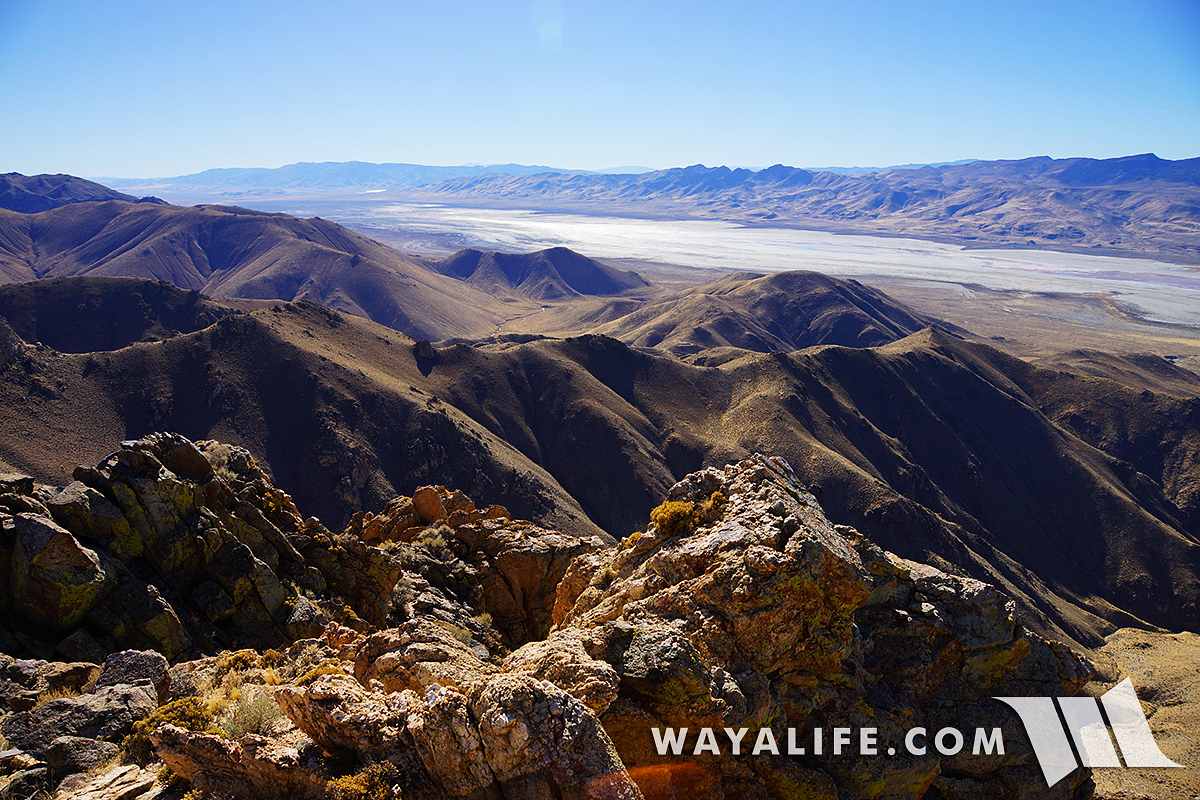
And here it is (rocky outcrop to the left), Mclane Peak - recently named after Alvin Mclane, a leading expert of Nevada's mountains and American Indian rock art and who died in 2006 at the age of 71.
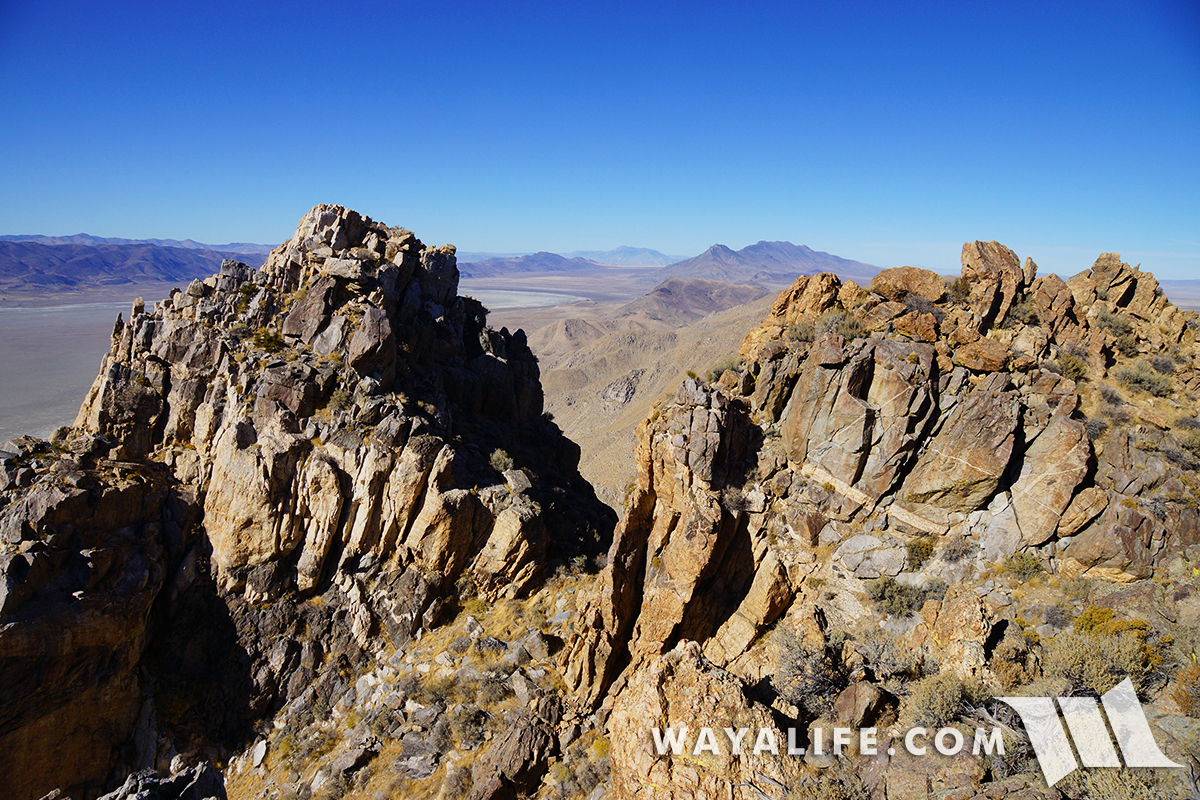
Unfortunately, climbing down the the rocks we were on and back up Mclane Peak was going to take more effort than we had time for and so, we decided to call it a day and come back with the sole purpose of bagging the 6,474 foot peak.
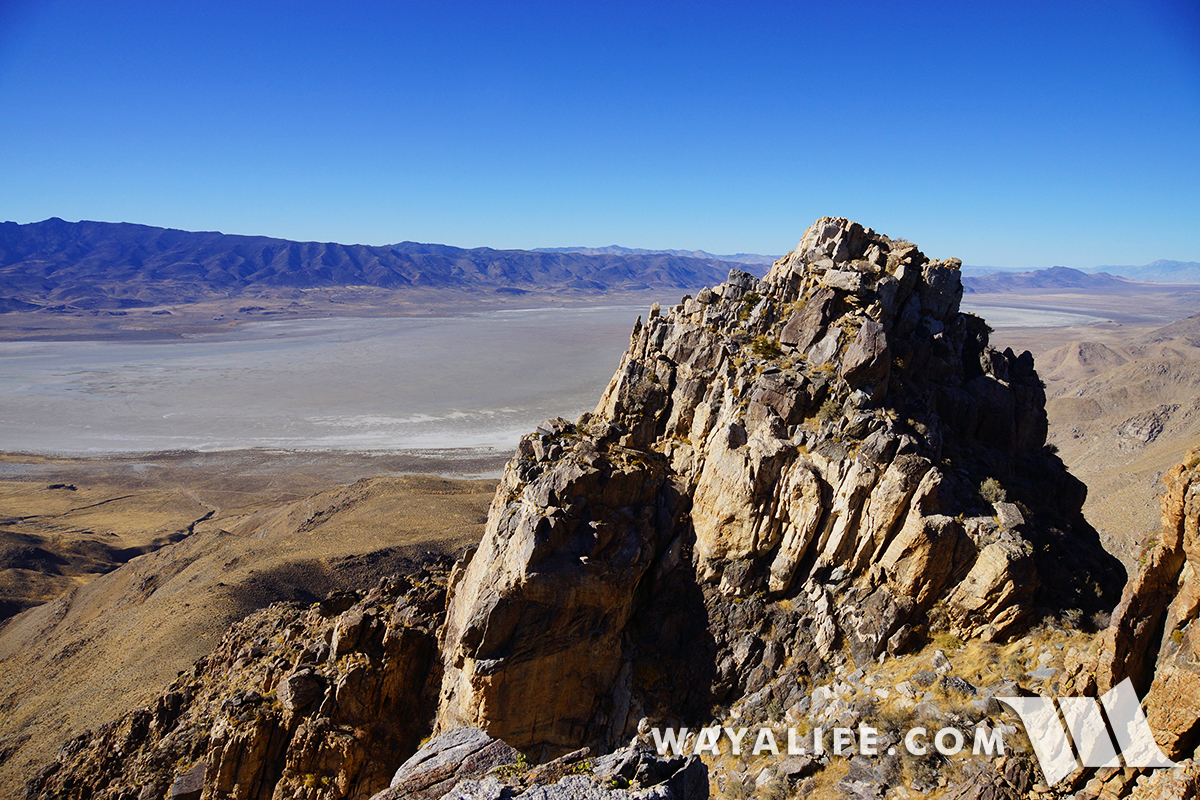
After a long day out exploring and hiking our way around the desert, we decided to stop over at Bruno's Country Club for a nice Picon Punch and homemade raviolis.
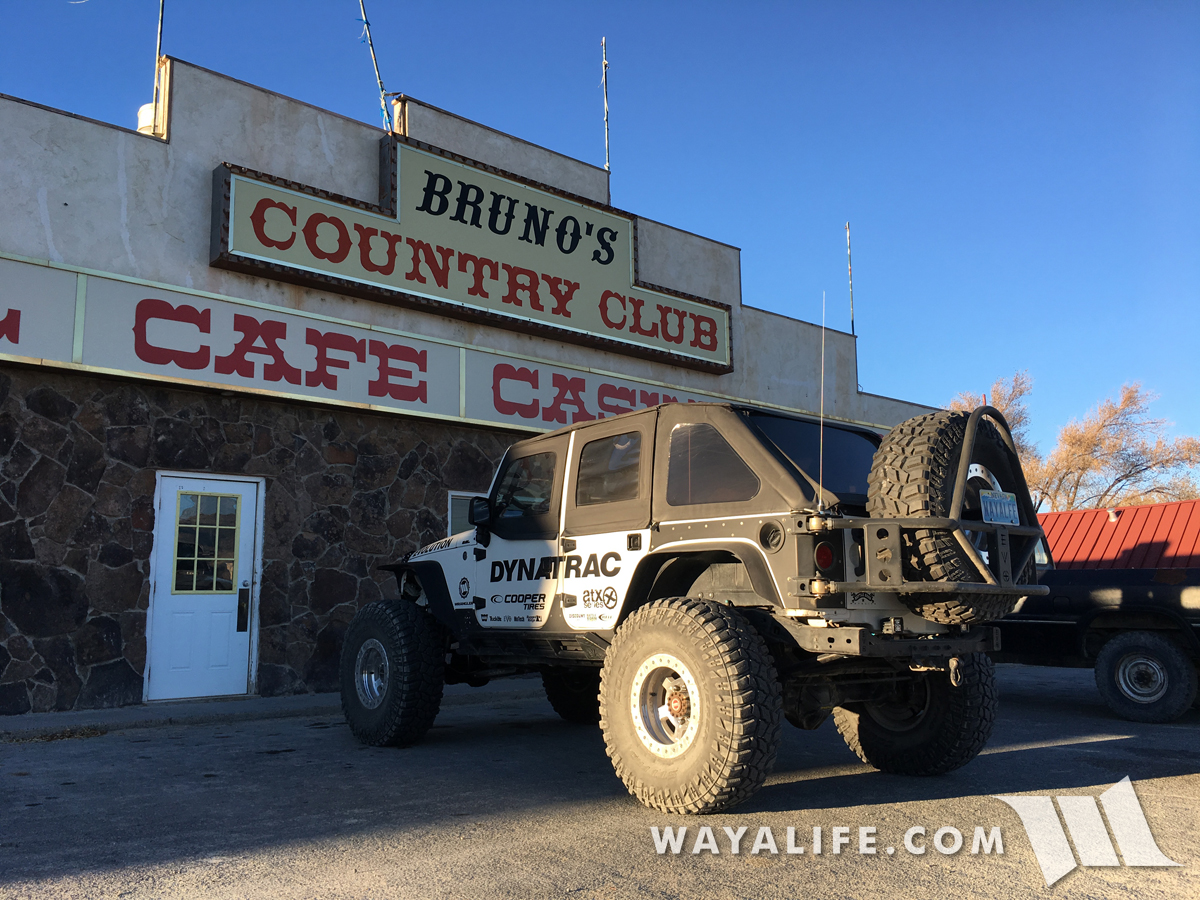
To a great day doing what we love most - CHEERS!
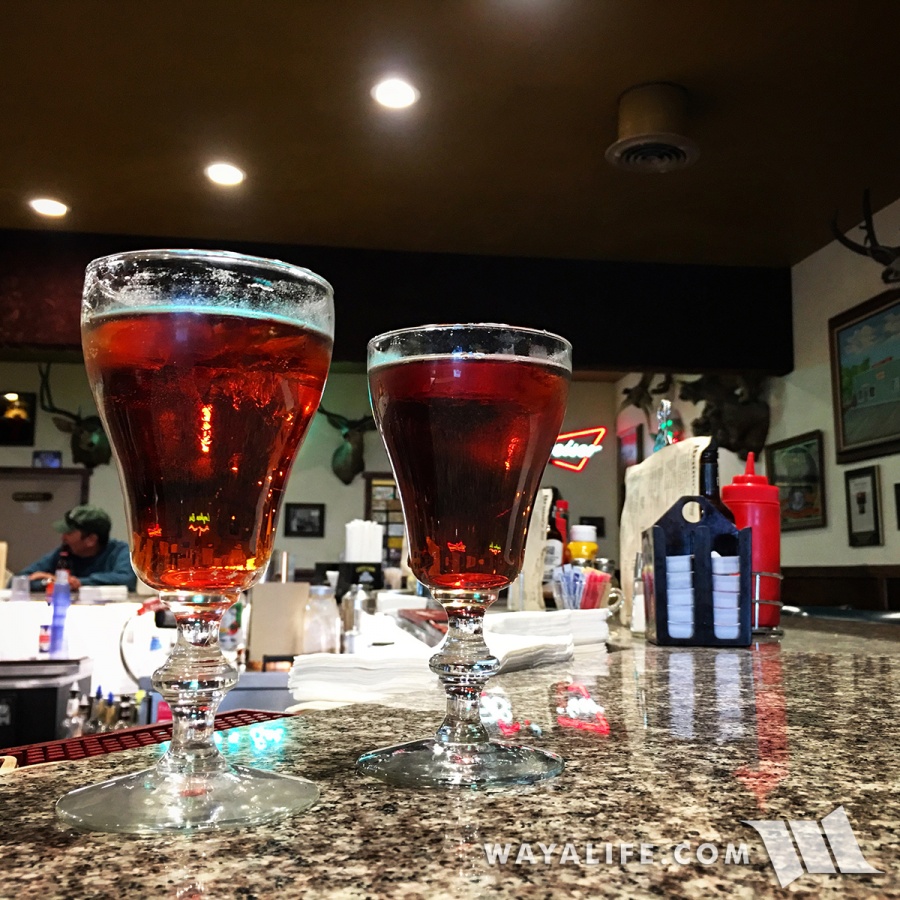
For those of you who are familiar with the places we've visited, we'd be grateful if you would PLEASE refrain from posting up directions or specific information on how to get to them. As you know, these places are still in near pristine condition and we'd love for them to stay that way. Thank you.
Heading out into the desert on a beautiful autumn morning.

Look - There's some ass in the distant watching us!

Heading up into the hills.


Making a stop to check out some cool looking tufa encrusted volcanic rocks.


On the move again.


And here we are, our first official destination of the day - the Indian rock shelters.

About 4,000 years ago, there was a large a shallow lake that filled the valley and it was known as Winnemucca Lake. Along its shores, natural caves like this were used as shelters by the Indians living in the area and for thousands of years.

Almost 10,000 year earlier, an enormous body of water, hundreds of feet deep covered most of northwestern Nevada and it was known as Lake Lahontan. For thousands of years, algae growing on the rocks along captured calcium carbonate and over time, formed structures known as tufas. While there are a myriad of tufa types that you can find around the world, the ones you can find in this area are truly amazing as they tend to look organic and living like coral.



I have heard where tufas with this appearance are sometimes referred to as "chrysanthemum" as the deposits form clusters of "pillows" or "pendant" like shapes.

It's hard to tell for sure but the reddish color you see here looked more like marks made by some kind of pigment than something that was naturally occurring. Of course, that's just what I was seeing.

As you can see, the ceiling above was covered in soot from hundreds if not thousands of years of fires burning inside the cave.


Time to go deeper into the labyrinth.


Back in the 1960's, archaeologist came to these caves looking for artifacts and this old ladder providing access to the upper levels was left behind by them.

The space inside is surprisingly large and a porthole allowed for good ventilation and some beautiful lighting.

Shot of the soot covered ceiling above.

View of the upper level.

Looking back toward the entrance of the inner cave.

Back in the mouth of the cave looking out and toward our next destination of the day.

And a shot of Moby down below.

Checking out some of the crumbling tufa encrusted rocks as we make our way over to the next cave.

The cave to the north was a bit smaller but still had a cool roof above.


View from the inside looking out.

Even on the outside, the tufas look alien and like something out of a science fiction movie.


WHO are you looking at? Found this guy in one of the smaller shelters.

It was a ton of fun exploring the old rock shelters but it was time for us to head up to our next destination... way up!

After climbing over 2,000 feet from where we were earlier in the day, we set out to explore a cool old mining camp.

Not a whole lot remains here but there is still one cabin still standing.


Knock knock - anybody home?

It's nice to see that even old miners back in the day took some time to decorate their cabins with some wall paper.




Here's the old mine. Not sure what the CBJ stands for but the paint isn't new and I can only assume the original miners put it there.

This shaft slopes down at an odd 30° angle and has a rickety old ladder with missing rungs to help you down it. I decided against going into it.

These look like they've been holding up well for a long time. With a swam of bats flying around my head, I decided to ventured into it.


After exploring the old mine, we started our hike out to the tallest point in the Nightingale Range, Mclane Peak.

The views along the way were simply breathtaking.

Standing on top of one of the many rocky peaks next to Mclane Peak looking out across the dry Winnemucca Lake.

And here it is (rocky outcrop to the left), Mclane Peak - recently named after Alvin Mclane, a leading expert of Nevada's mountains and American Indian rock art and who died in 2006 at the age of 71.

Unfortunately, climbing down the the rocks we were on and back up Mclane Peak was going to take more effort than we had time for and so, we decided to call it a day and come back with the sole purpose of bagging the 6,474 foot peak.

After a long day out exploring and hiking our way around the desert, we decided to stop over at Bruno's Country Club for a nice Picon Punch and homemade raviolis.

To a great day doing what we love most - CHEERS!

For those of you who are familiar with the places we've visited, we'd be grateful if you would PLEASE refrain from posting up directions or specific information on how to get to them. As you know, these places are still in near pristine condition and we'd love for them to stay that way. Thank you.
